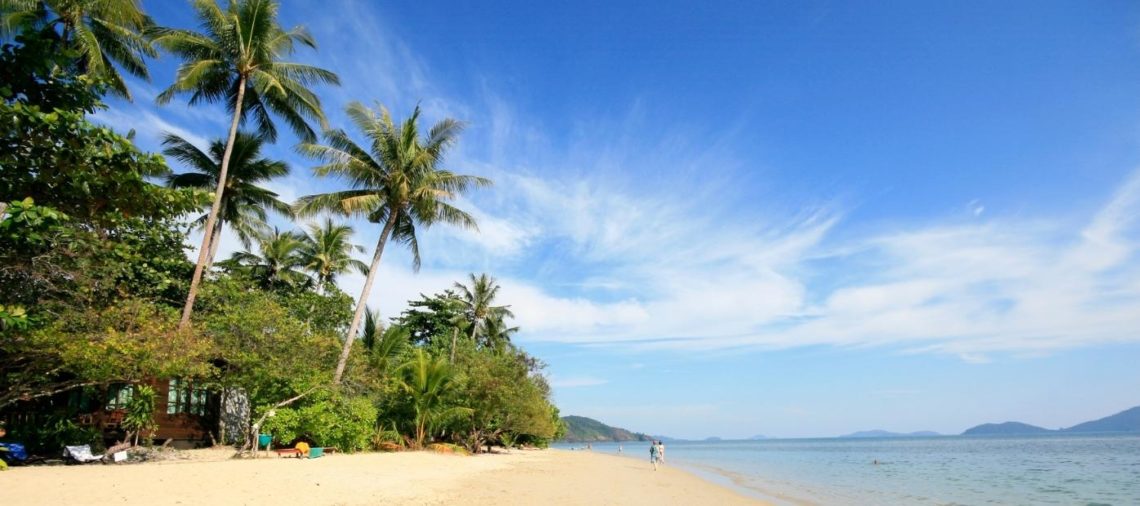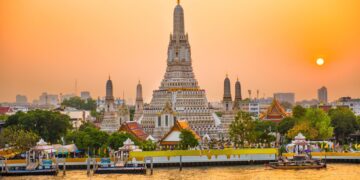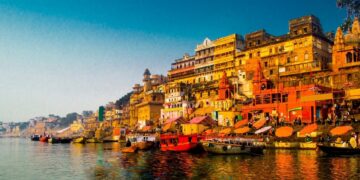After a “Chinese” evening in Bangkok (see the story here), I depart for Trat on a domestic flight the next day. Trat is a province in the southeast of Thailand. A hidden nook near the Cambodian border, 315 km from Bangkok, is bathed by the Gulf of Thailand and known for hiding gemstones in its depths, just like neighboring Chanthaburi, which we will reach later.
Ban Nam Chiao, the village on the water in the Trat region of Thailand
Trat, whose name comes from the krat, a species of tree that grows in the area and from which brooms are made, has a history marked by all sorts of deals with the French who roamed the area in the late 19th – early 20th centuries. Not surprisingly, the region acted as a kind of buffer between Thailand and Cambodia, culminating in 1941 when the Thai fleet scored a small victory over the French. Cause for annual celebration these days.
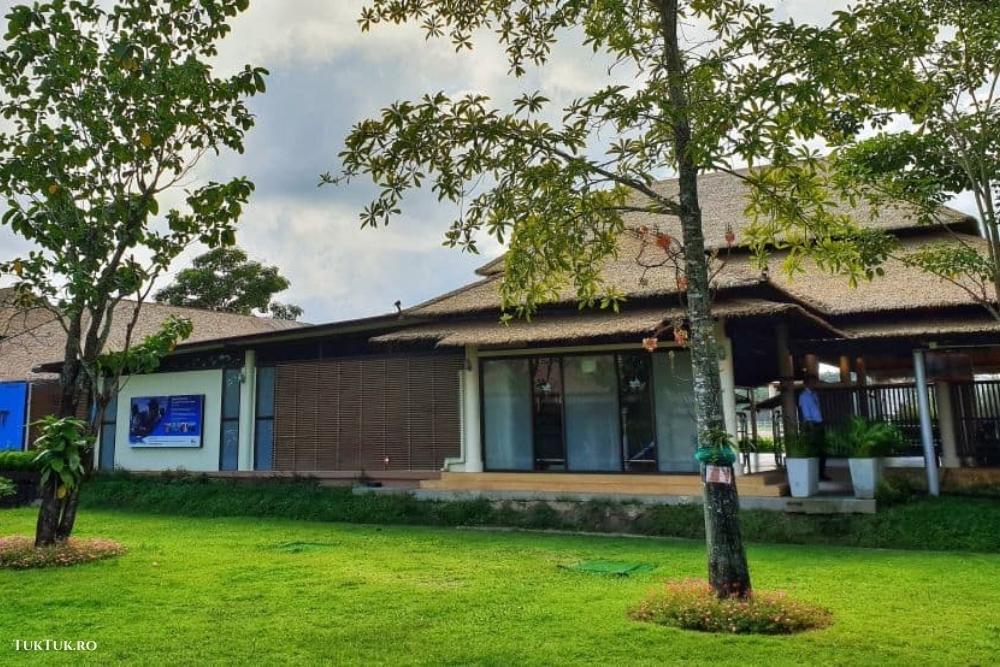
We land at Trat’s small, private, posh, and… open airport. Operated by Bangkok Airways, the airport has a colonial look and, as I step off the plane, then cross the runway to reach the luggage brought in and unloaded in an enclosure by two lads, I expect to see a few ladies in long, Parisian dresses, properly hairdressed and fanning themselves like disgruntled prudes for being too hot.
But we don’t live in such… historical times, so I head for the mainland’s main attraction: the water village of Ban Nam Chiao. Here, on the banks of the Nam Chiao River (more like a small estuary that forms out of the Gulf of Thailand), lives a community trying to maintain a traditional, eco-friendly way of life. Basically, a few fishing families, both Muslim and Buddhist, have lived peacefully for centuries and seem to be extremely happy in their modesty kept intact over time.
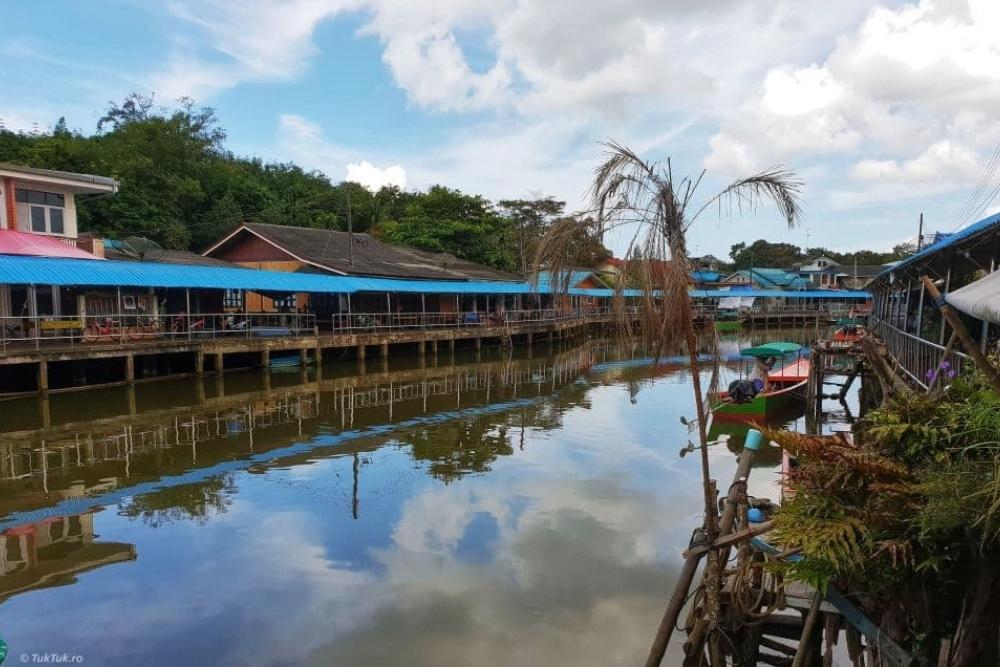
I crossed a bridge then took a walk along the pontoon to the farmhouse, where I participated in an agro-tourism demonstration conducted by graceful women with permanent smiles. But until there, this village instantly glued to my heart the Romanian saying – ” the eternity was born in the countryside”.
No sign of tourists. In the houses stretched side by side on the pier, people went about their daily lives in ancestral silence. It was still morning. Women were working in their open-door houses. Children were playing quietly. The young men, those who had not gone fishing at dawn, were working on their colorful and complicated boats. Older men were preparing to gather in small groups and gossip about anything that came into their sight. From time to time, women of all ages would ride scooters from one side of the pontoon to the other, carrying all sorts of things. On the river, a boat dared to disturb fishes’ rest.
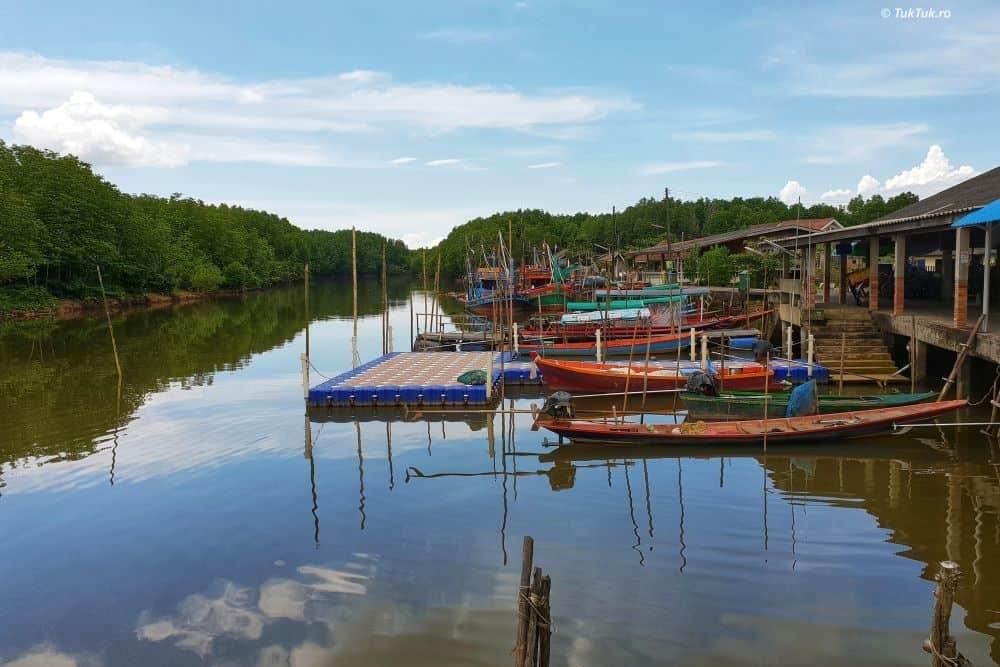
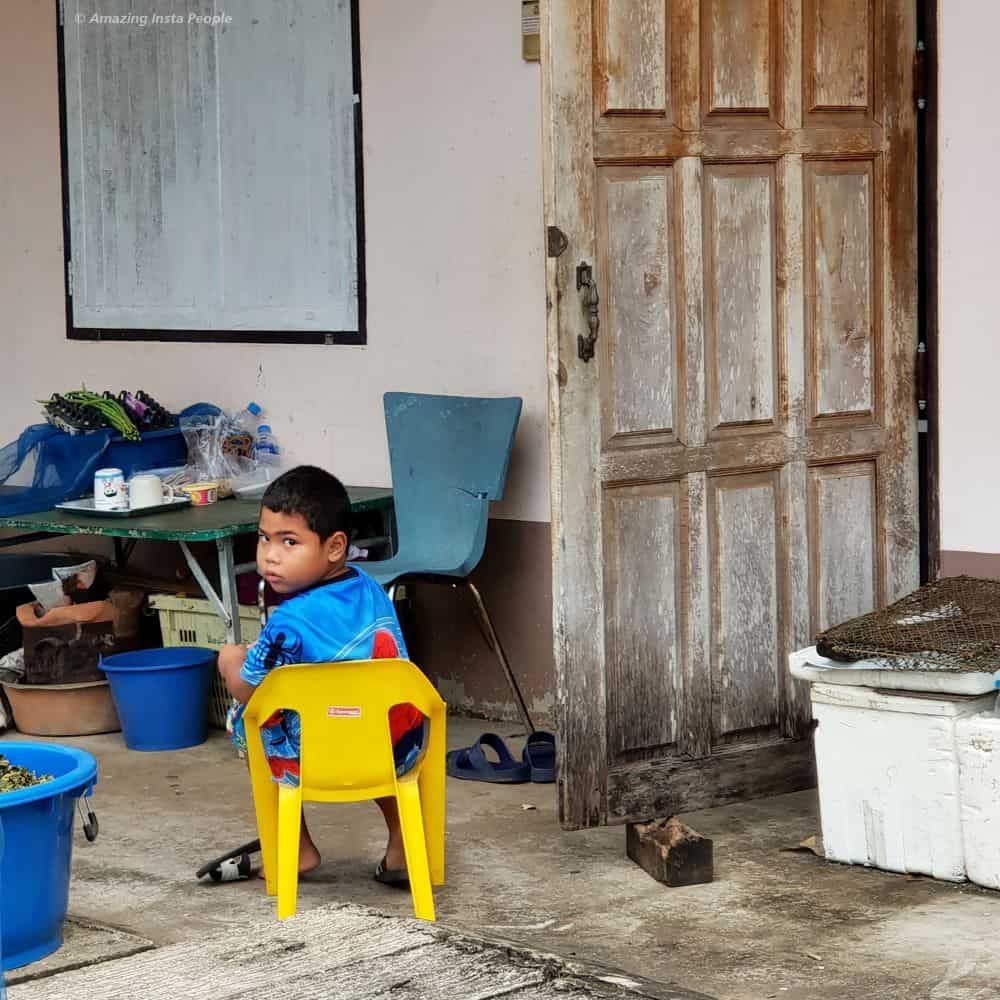
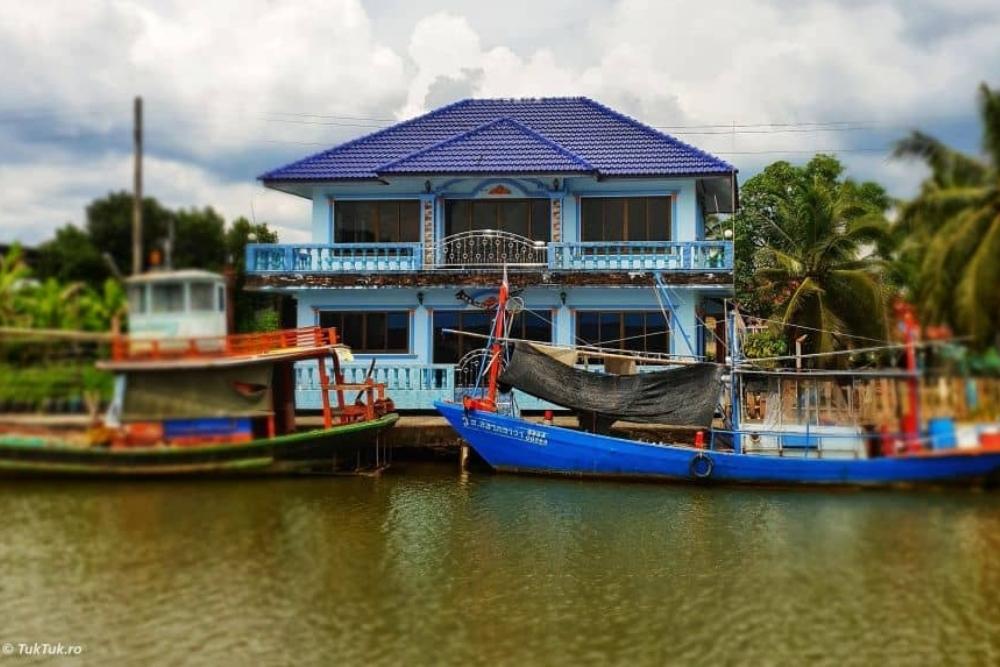
Walking towards the end of the village, I stopped at one point on the pontoon and looked around, trying to realize where am I. I was in one corner of Thailand, somewhere in Asia, it was so quiet, and life seemed so easy and at the same time so full of meaning, that I inevitably began to wonder, in an existential pang, why the internet was invented, why do people fight, why shopping malls exist, why do we always want more, when so little is enough? At that moment, a woman walking her baby on the pier in a stroller passed me. They both looked at me and smiled, and I understood, in fact, I reminded myself that the simplest things are the ones to bring happiness in life. Even if they are fleeting and even if sometimes it takes a corner of Thailand to find them.
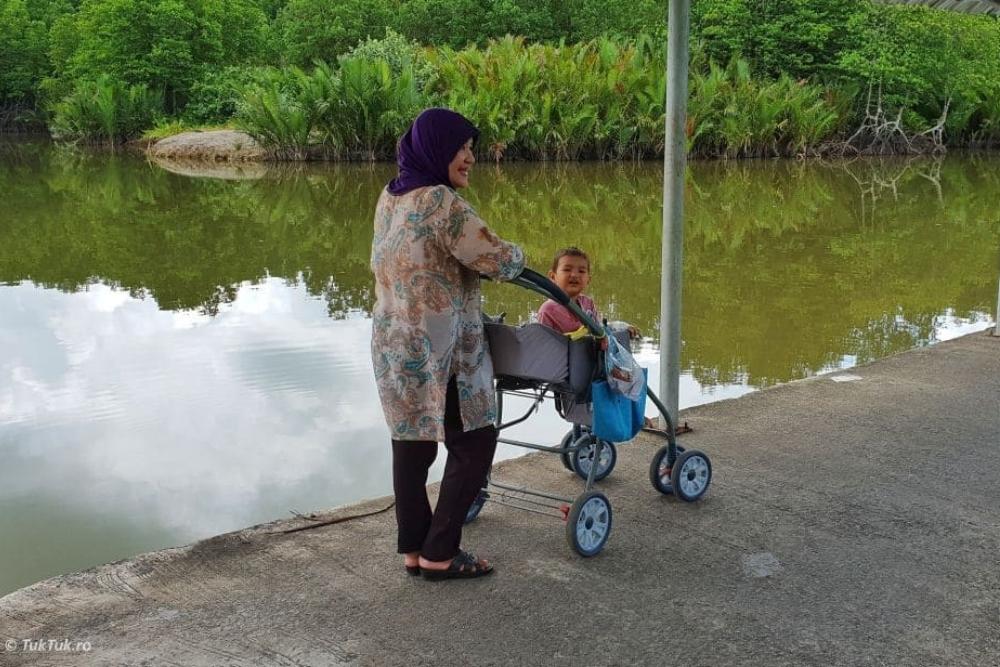
I returned to the household where the “action” was to take place, in time to watch a skilled lady weaving hats. The hats are called Ngop Nam Chieo by the locals are a kind of local ancestral artifact. Renowned throughout Thailand, they are made from the leaves of the nipa palm tree, from the region’s mangrove forests. Standing on a platform, the lady in question was busily weaving a hat, with several other ready-made examples beside her. The guide explained the production process. There are six types of hats, each with its own use, for different occupations, worn by fishermen or rice pickers. Who the hell knows who still wears them these days, though, but these hats look super cool, and if you have a room full of souvenirs from your travels at home, they will look great.
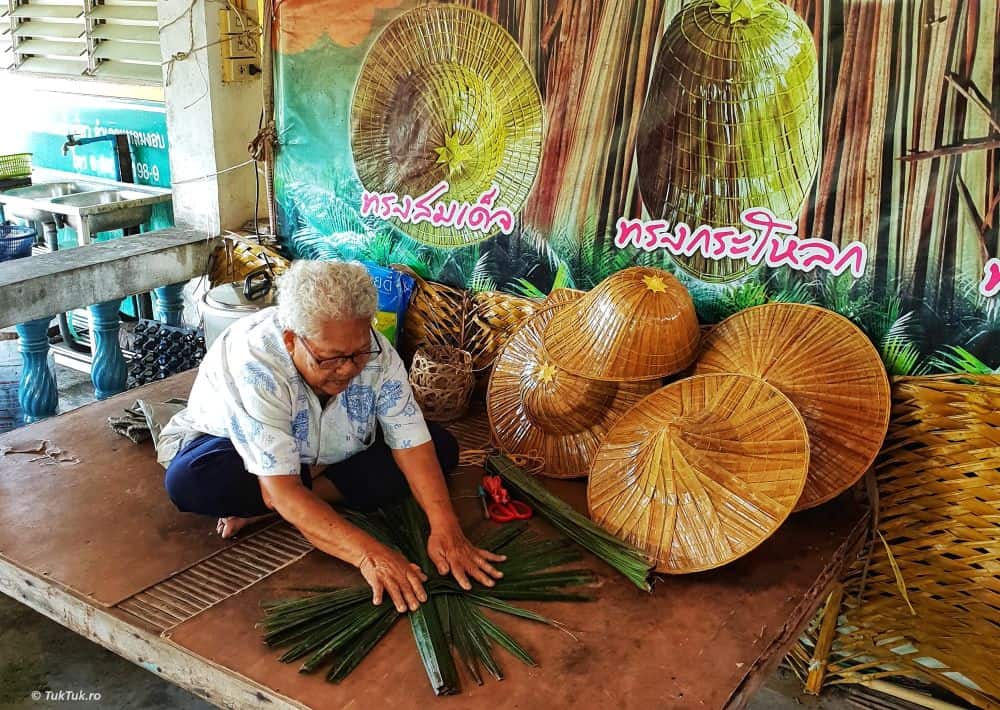
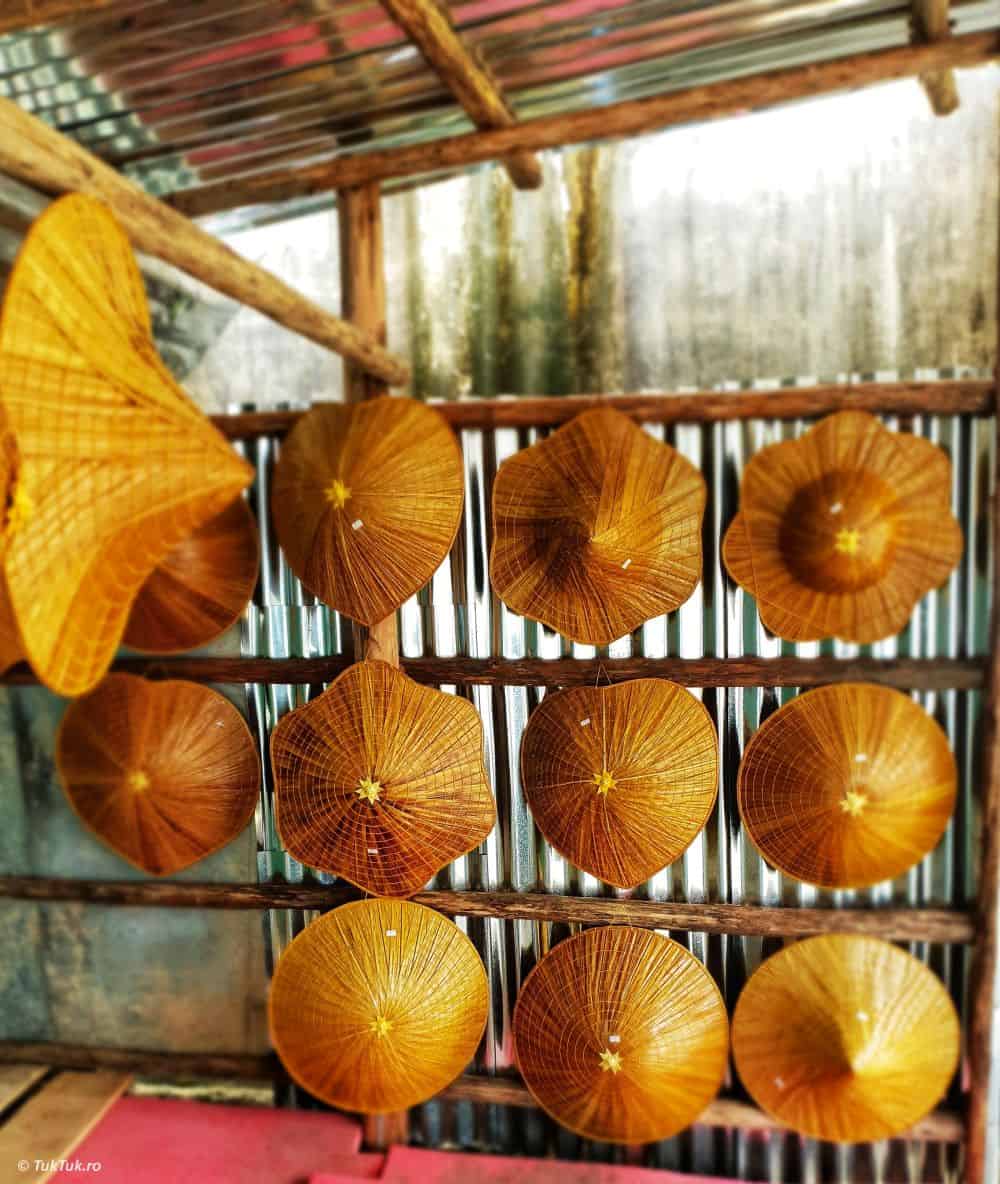
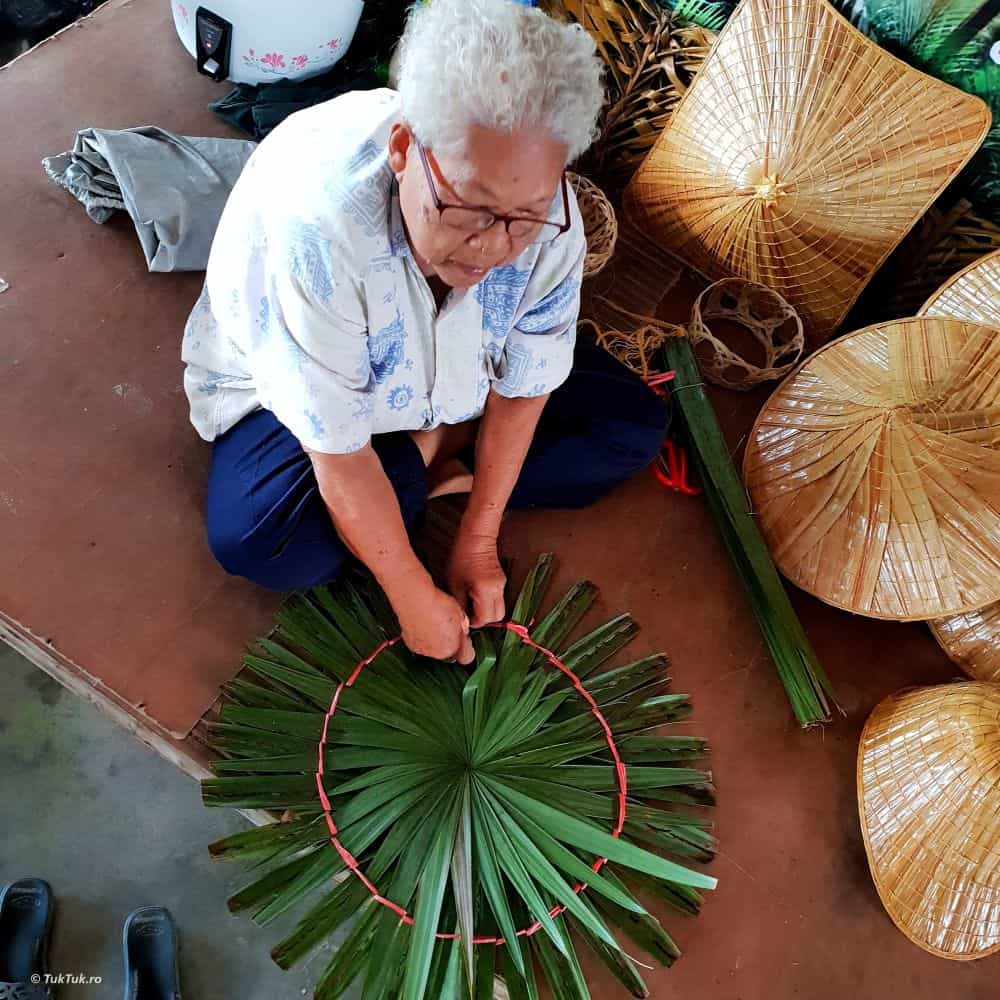
While the aunty-hatter was lending her artistic touch to the local fashion print, two or three other fine ladies demonstrated their gastronomic talents. One was spreading rice crackers on a net, another was gracefully “assembling” them, resulting in a dish that I’m not sure is called khanom buang, but chances are it is.
A semi-sweet affair, a starter for the generous meal that was to follow, whose star was Tom Yum soup, and that’s because it’s my favorite, anytime, long live lemongrass!
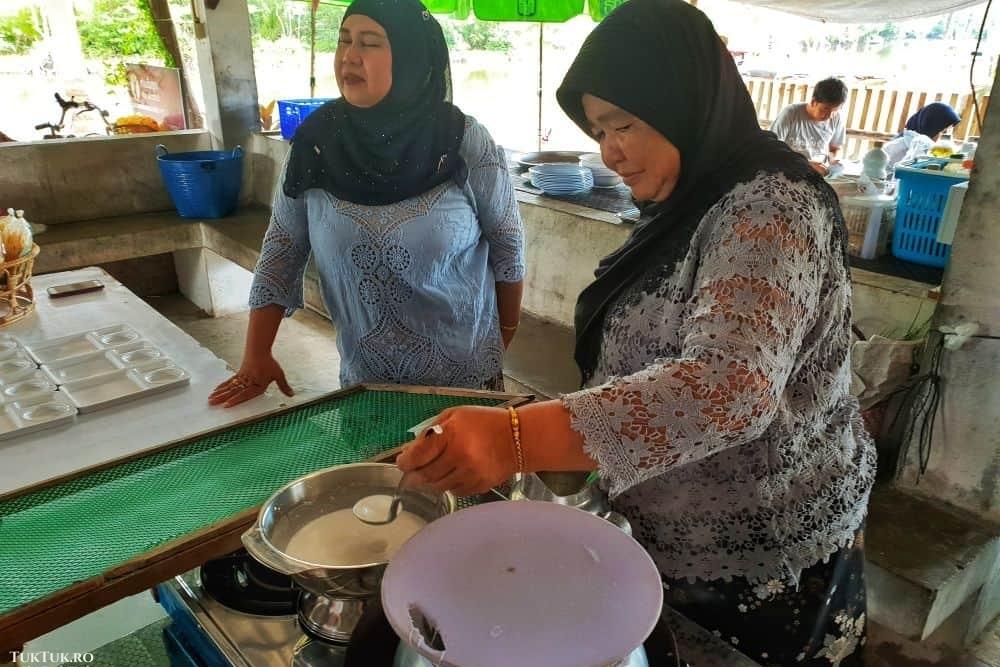
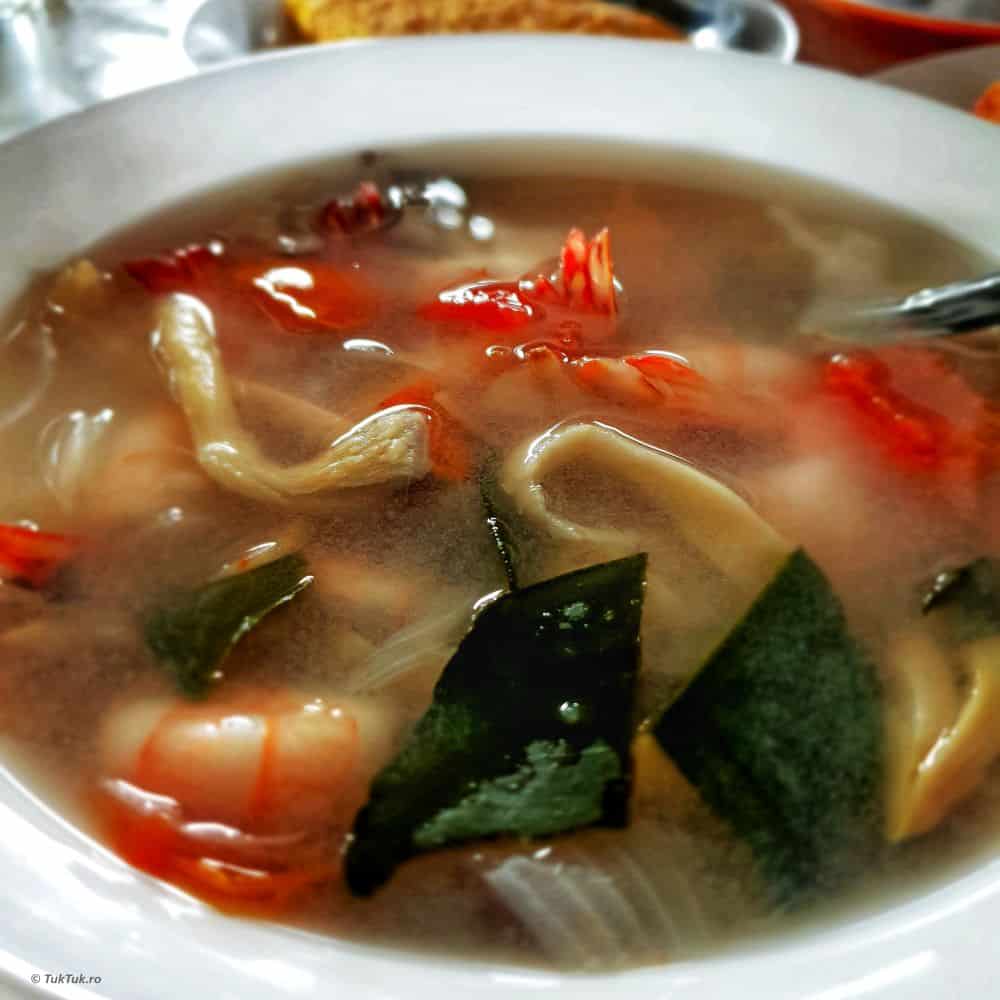
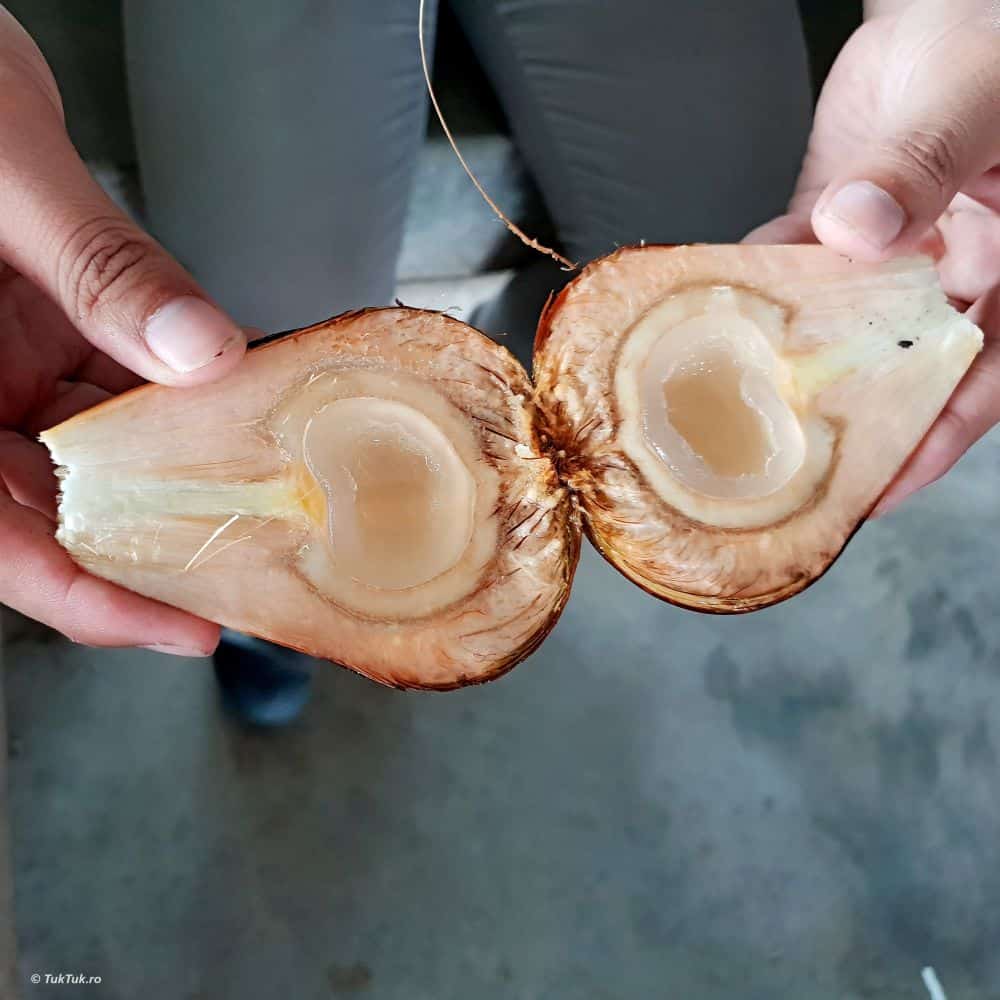
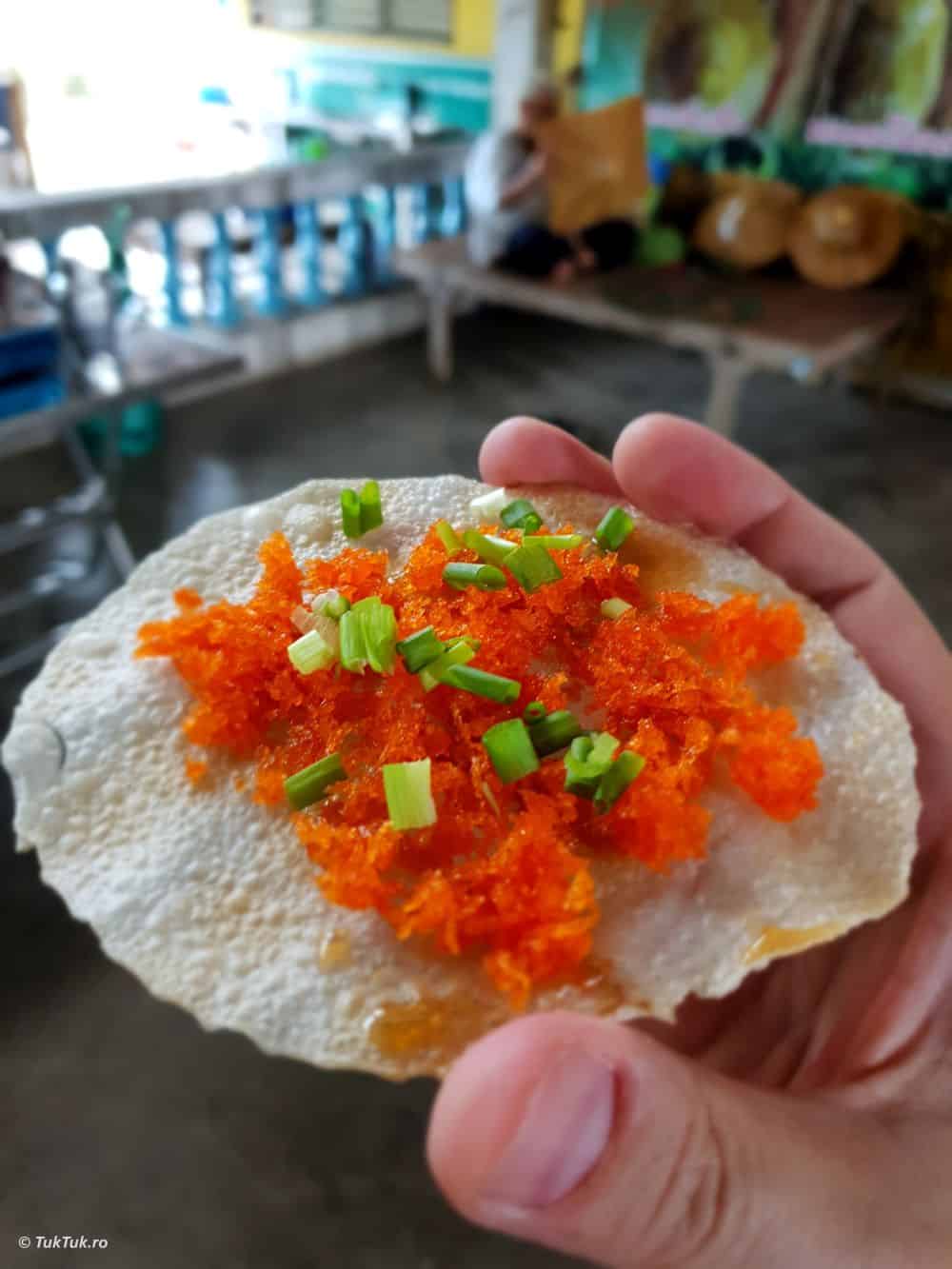
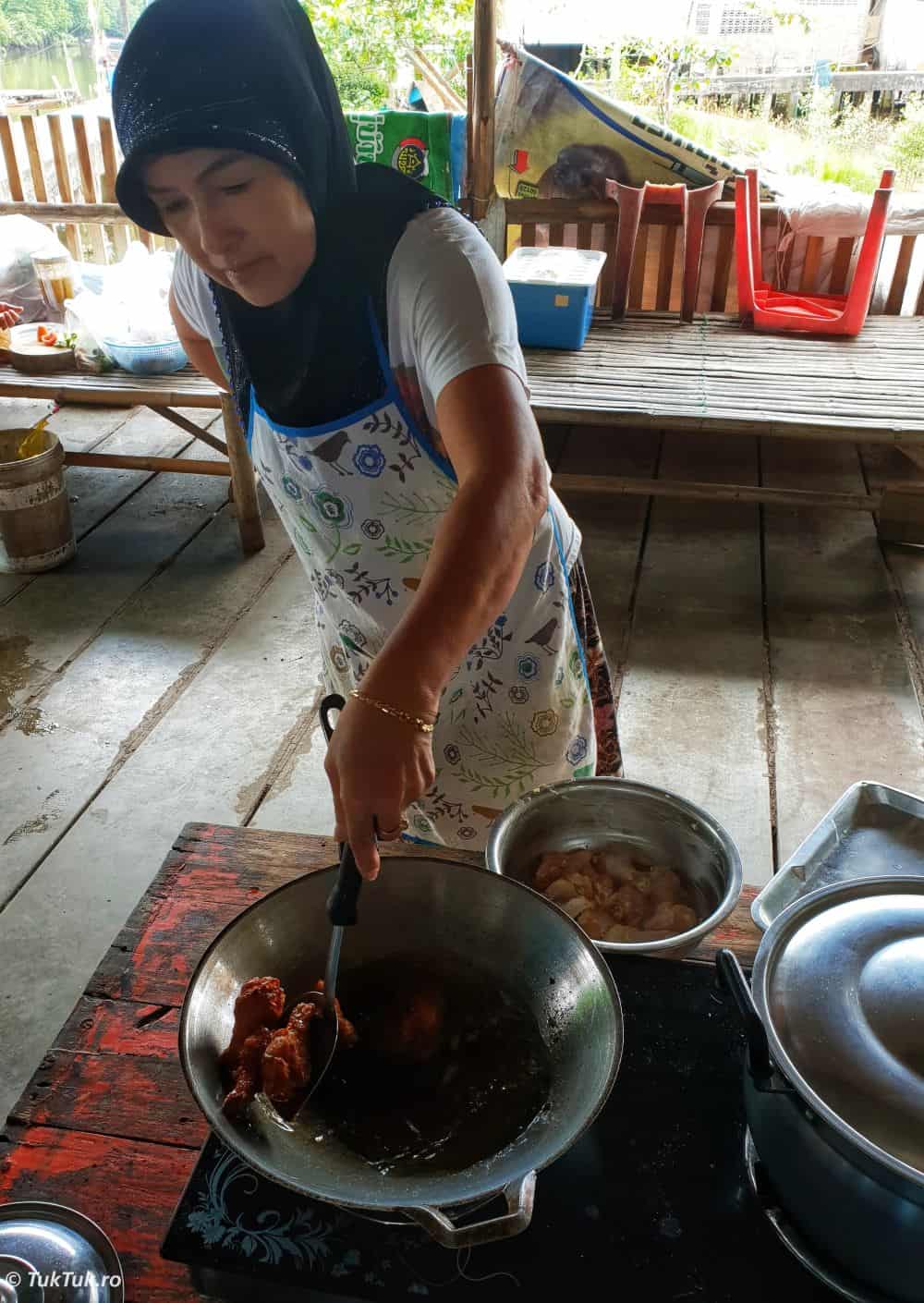
I left Ban Nam Chiao a few hours later as the clouds gathered for the awaited shower of the end of the Thai rainy season. I don’t know if you’ll ever arrive here, but don’t lose it if you get the chance. It’s the kind of place where you leave any pride at the door, take off your shoes, and walk in smiling and biting a piece of bread, glad to be surrounded by colors you had no idea of.
Koh Chang, the divers’ island
I left behind the sleepy village. I learned later it has become increasingly “wealthy” over the past few years, thanks to its eco-rural tourism. Although I didn’t see any tourists (because it wasn’t the season, presumably), I understood that there are a few places in the village where you can stay in excellent conditions in the locals’ houses.
I teleported from Ban Nam Chiao to Thailand’s second-largest island, Koh Chang, one of the most beautiful Thai Islands. In translation, it would be “elephant’s island”, but Thais don’t have time to get lost in translation: in fact, the name doesn’t come from some elephant that lives like a hippie here, but from the shape of the island, which resembles that of a pachyderm that’s kissing.
Koh Chang is about 30 km long from north to south (and there are just as many in the opposite direction!), another 14 from east to west, and is home to some 5-6,000 souls, making it something of a secret pearl of Thai tourism. That’s because, when it comes to the islands of the Kingdom, tourists prefer to flock to the most marketing-savvy: Phuket, Samui, Phi Phi. Especially as the ‘elephant’ location, in the far east of the country, is not very convenient from a tourist point of view.
Koh Chang beaches
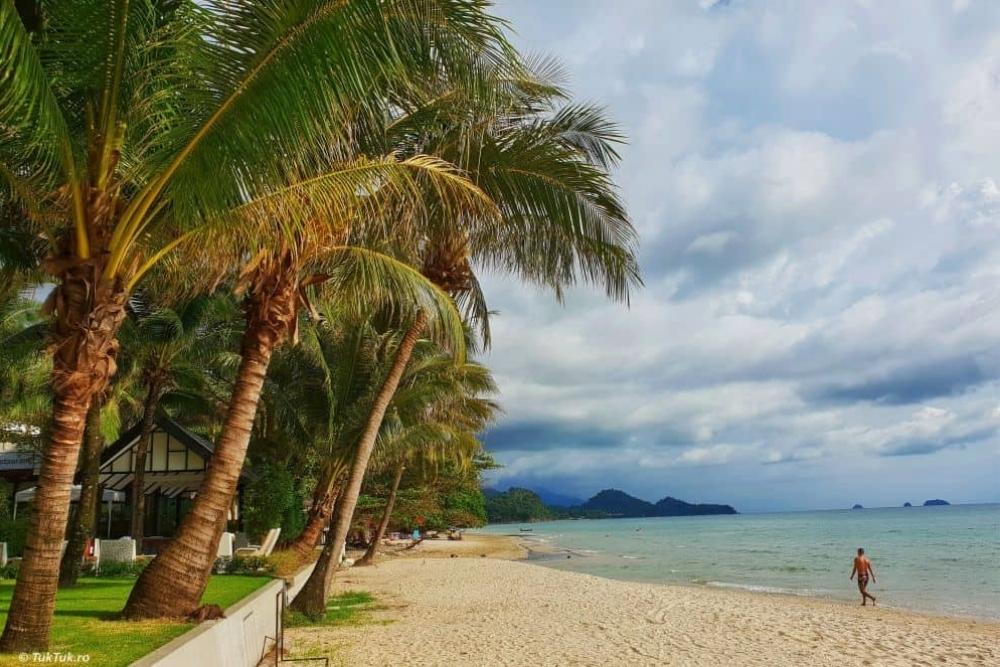
But that doesn’t mean people don’t come here. Koh Chang – I was to discover in my almost two days on the island – is a little paradise, primarily for divers (and much more novice snorkellers). Incidentally, the island’s structure is very interesting: in the middle, it has a mountainous, jungle-covered area that divides the territory into two distinct regions: the west coast – with wide beaches and, automatically, resorts and hotels of all kinds, and the east coast – reserved more for the locals, including those who run things around here.
On Koh Chang, things stayed simple. I slept one night in a beach resort, equipped with everything an exotic beach resort needs, from an infinity pool to… the white beach. It’s called the KC Grande Resort & Spa, and I recommend it, in case you end up in these parts.
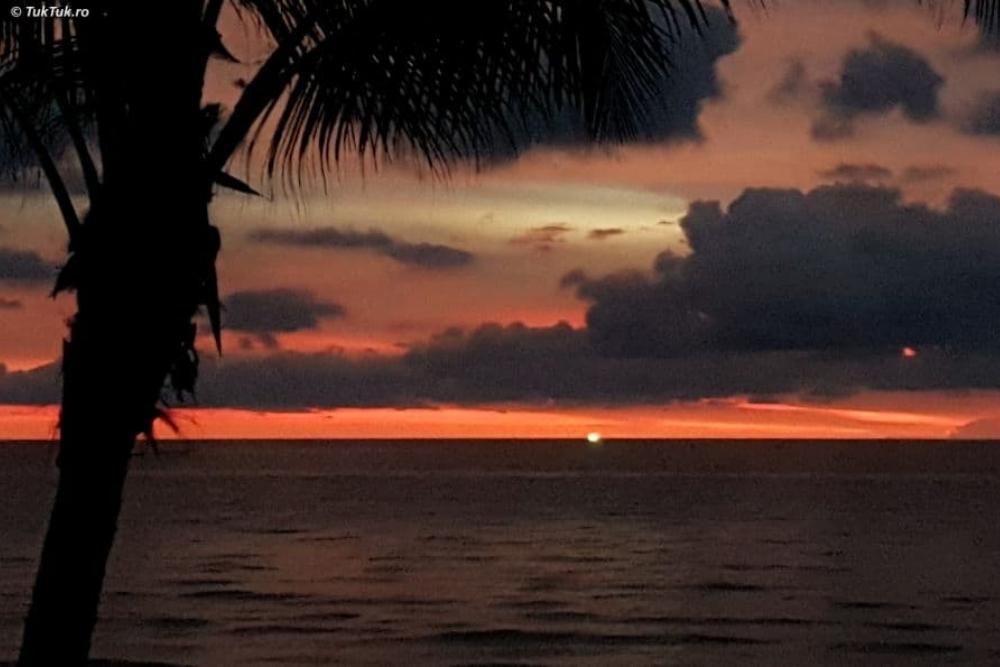
The only problem with it… were two: the first (and this is not its fault) is that I had the misfortune to spend a night in Paradise just when I was suffering from a toothache that was eventually only tamed by Buddha. He got the face of a pharmacist who was very willing to give me antibiotics without any problem, writing the prescription himself with a smile. The second problem was that at about 1 a.m., in the midst of the ordeal in which I unsuccessfully invoked the Gods of Dentistry, a creature in the hotel garden (otherwise very beautiful – the garden, not the creature) made a hellish noise, which shamelessly smashed through any window, wall, brick or lead wall and stabbed directly into my ostracised dental nerve. I couldn’t decide whether it was a frog or cricket, but its “song” will remain in my memory for a long time, like a call of the Thai Nibelungs (in case there were any of those in the Asian seas), whom I would have been happy to kill in exchange for the Tooth Fairy.
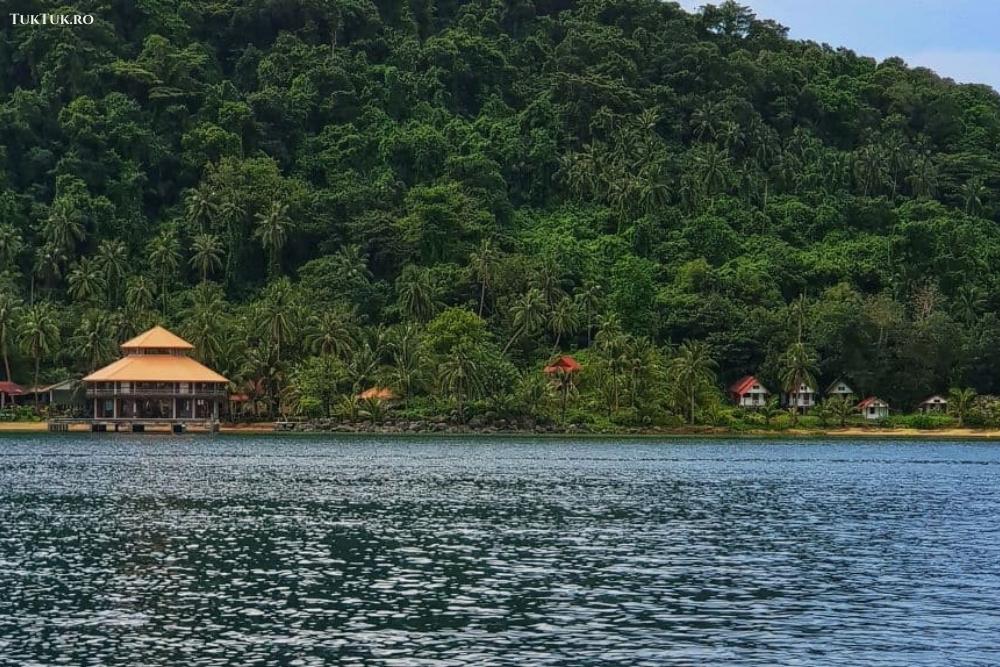
But the first impression before the Great Nocturnal Torment was superb. On the agenda, I had a private tour of five little islands, part of the archipelago whose mommy and daddy is Koh Chang. I’ve seen this tour advertised all over Koh Chang as the Five Islands Tour, and it includes – just for the record because you won’t remember them – the so-called Wai, Kham, Maak, Tayang and Kood, each with a Koh before it, which I thought I told you it means island.
Each of these five jewels is different and has its special beauty. On the first one, which looked uninhabited, I saw shell crabs, and on my departure, I would have taken it home.
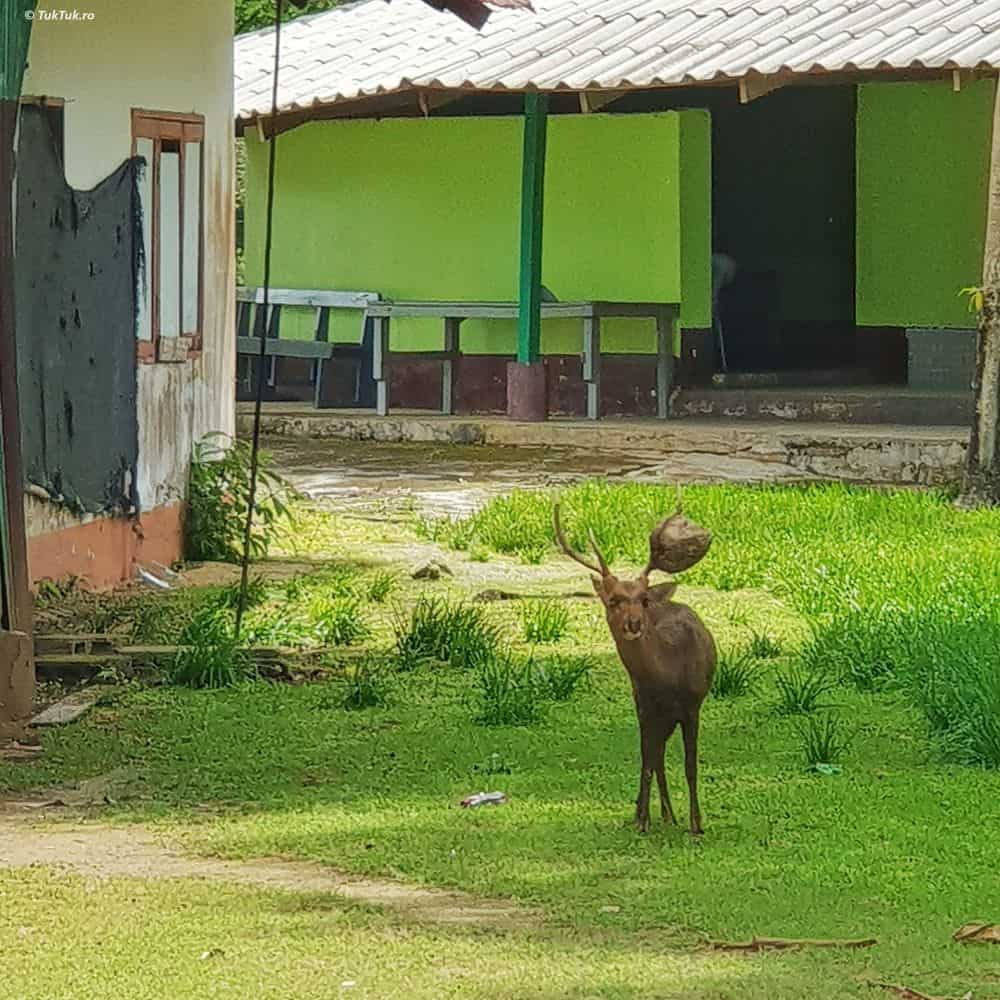
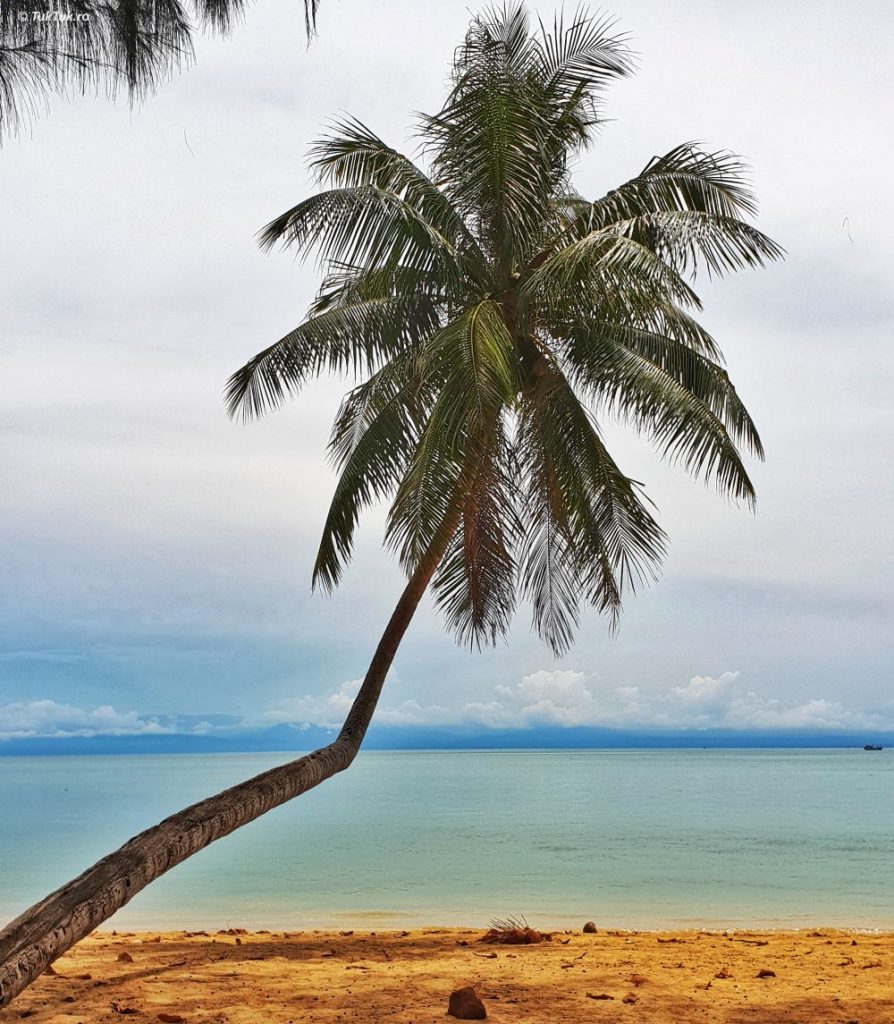
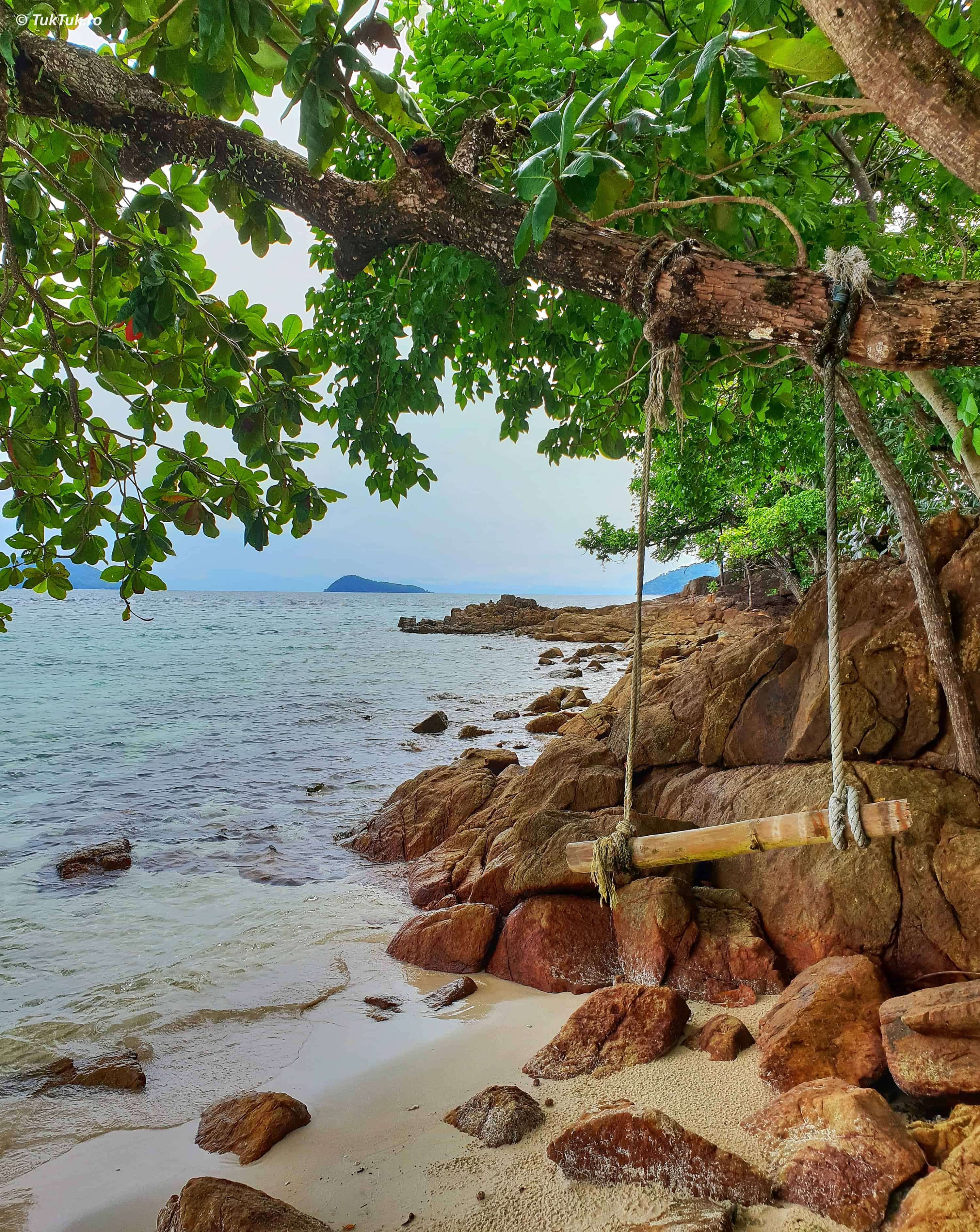
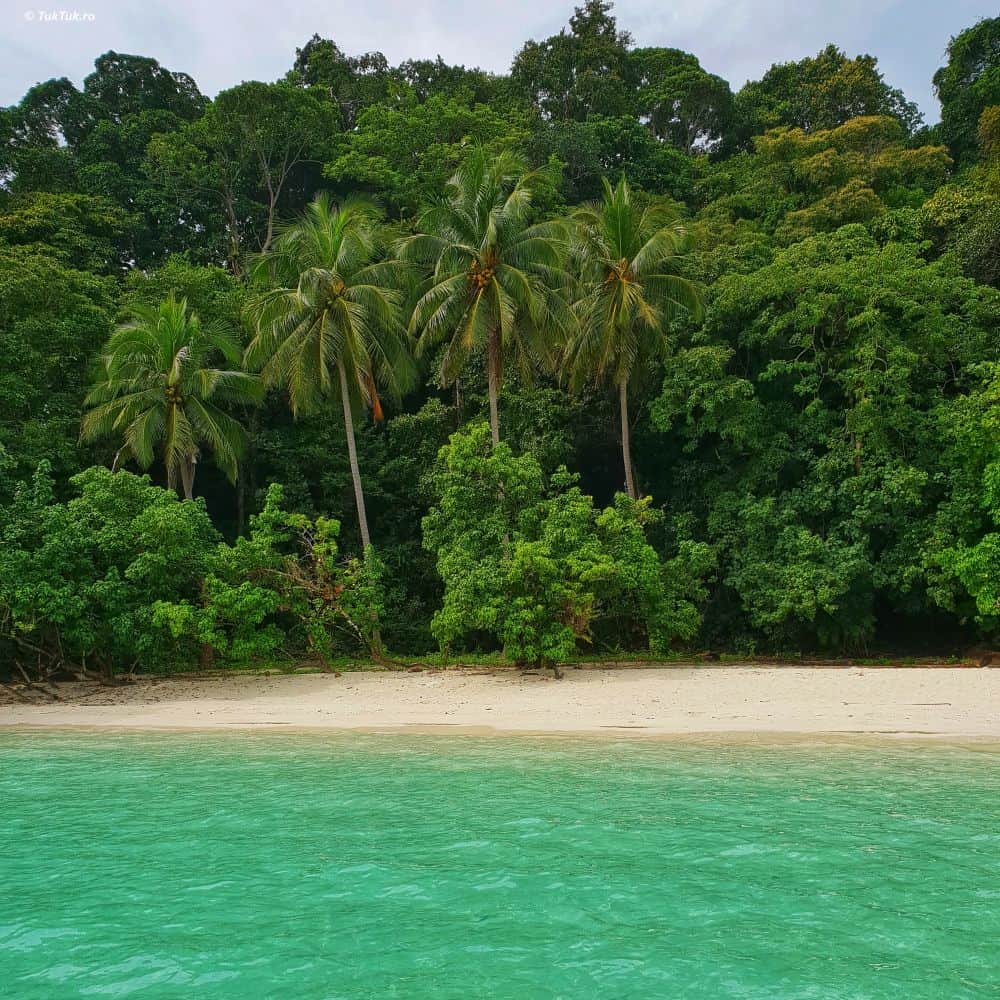
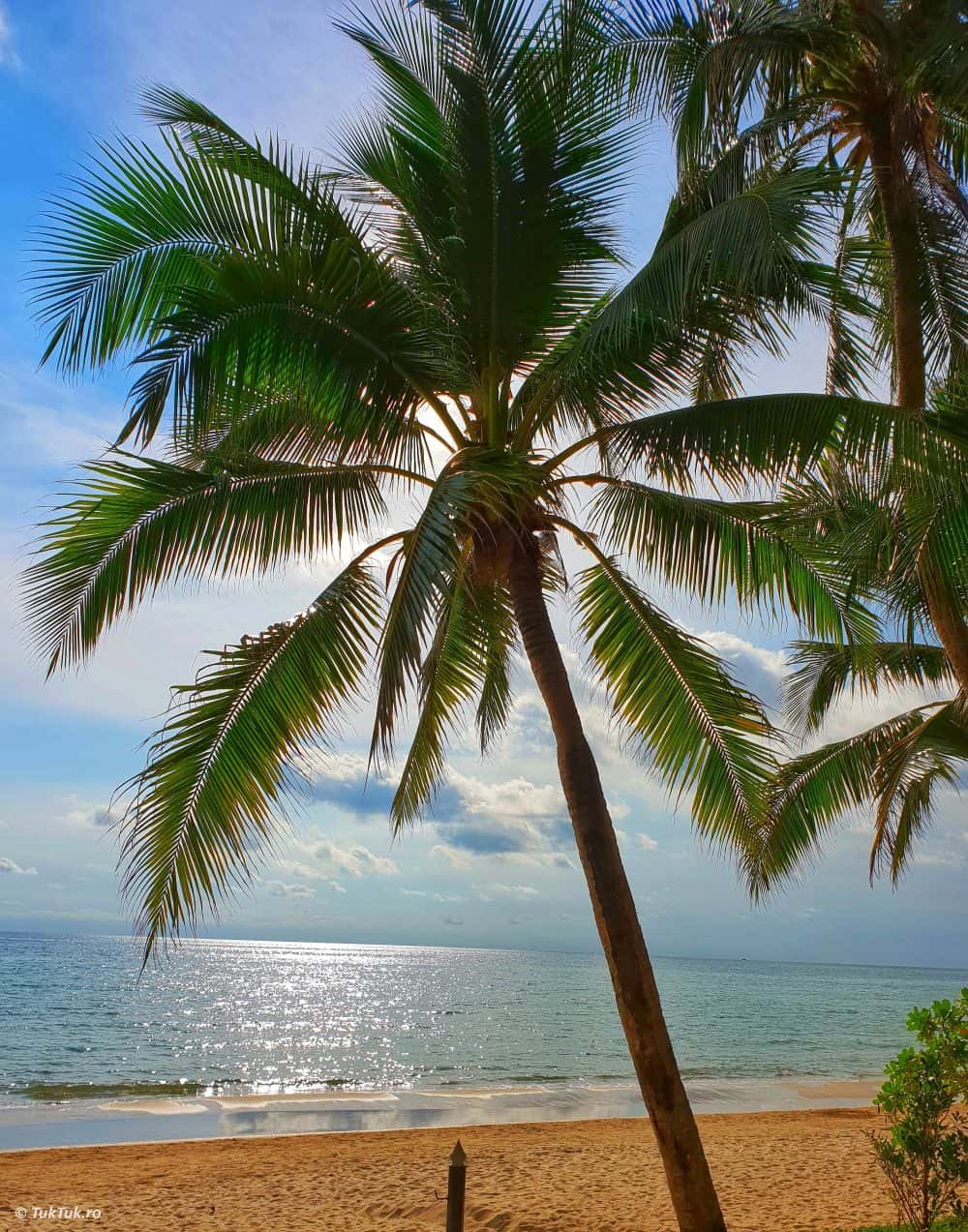
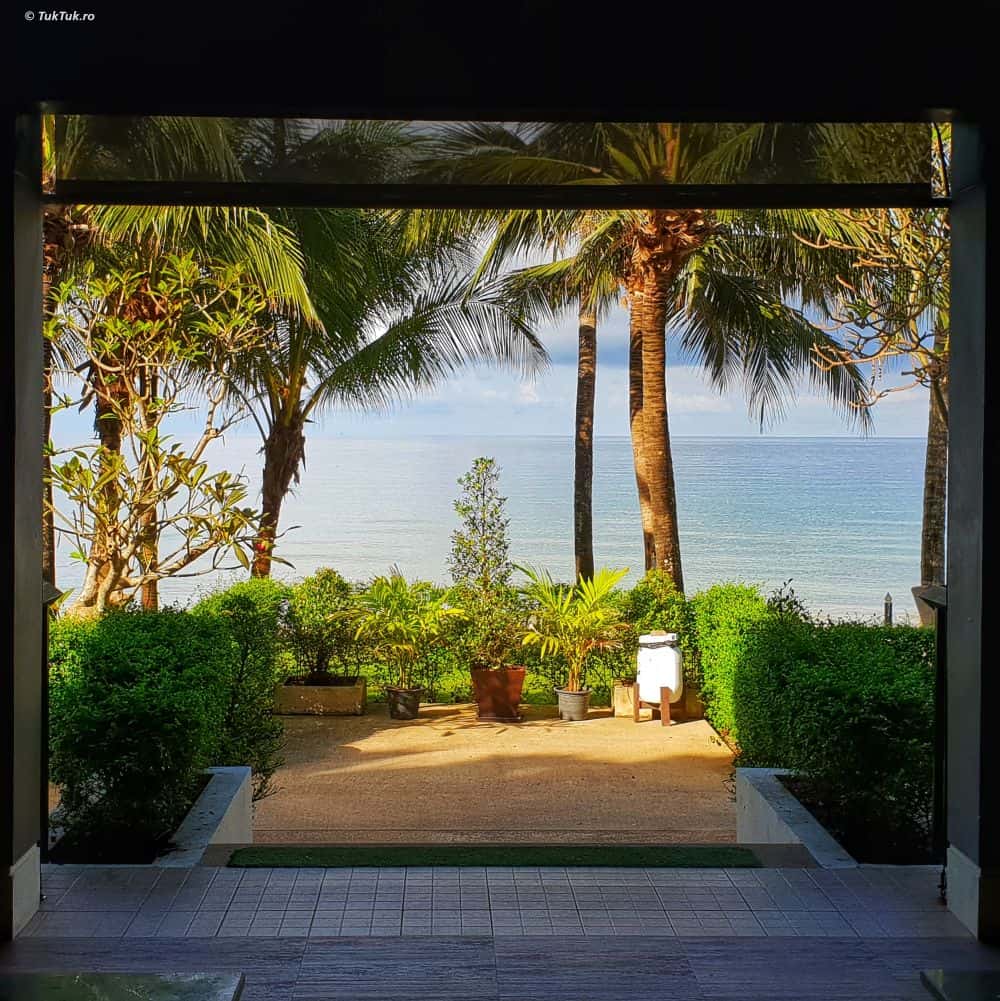
On the second, I was greeted by a goat with a coconut in a horn (I didn’t get her name, but it was really cool, and I hope it hadn’t put her nut on just because I was coming) and two guys (of the three who lived there) took me on a sort of tractor ride to the other end of the island, where there was another White Paradise, which I wanted to take home as well. Obviously.
On the third island, I ate yum-yum….
…on the fourth, I saw a shop that looked like it was imported from Jamaica….
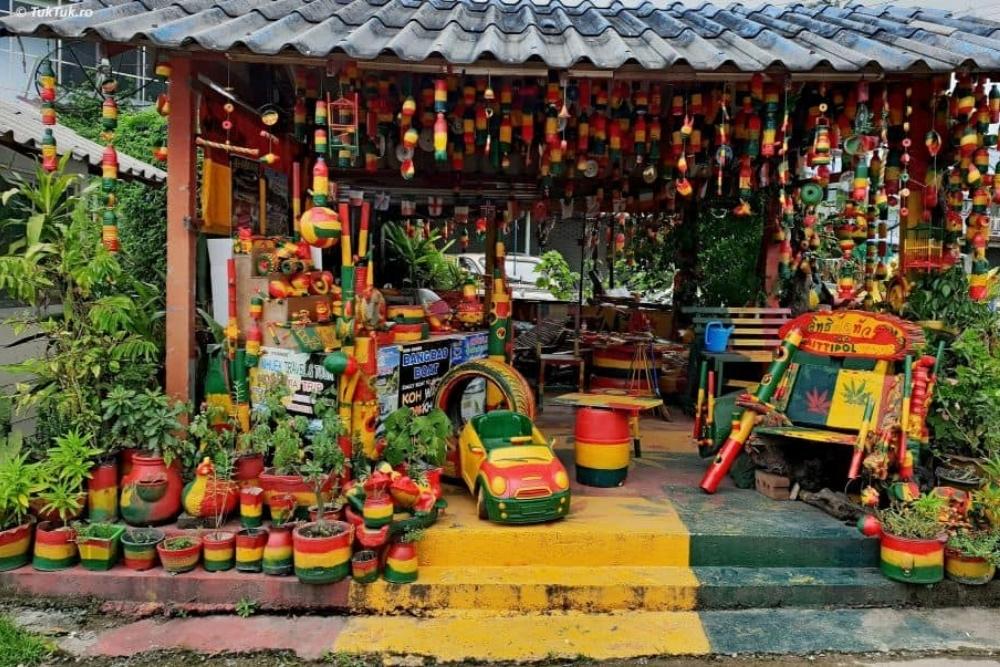
…and on the fifth, I snorkeled, meeting colorful fish, including Nemo, who was happy and asked me to send his regards and an invitation to come to watch him play with Dory.
Snorkeling in the Gulf of Thailand
I wish I had stayed longer on Koh Chang to discover its true virtues. The sunsets are fantastic, the beaches are straight out of the exotic places brochure, and the island seems to have a rhythm all its own, seductive and intimate. Once again, Thailand is wonderful, and thanks to this special place also.
But as the schedule has a point, I left Koh Chang for my last stop in Thai land before hitting the road to Cambodia: Chanthaburi.
Chantaburi, the city of precious stones
I don’t know how many people have heard of Chanthaburi. As the Lonely Planet guidebook aptly puts it, “Chanthaburi is proof that what glitters is not always gold”. I don’t think there could be a better definition for this region in eastern Thailand, west of Tran, the one I mentioned above, with its eponymous ‘capital’, nicknamed ‘City of the Moon’. Chanthaburi is a strange combination of “what the hell am I doing in this town?” and “wow, what an interesting city!”.
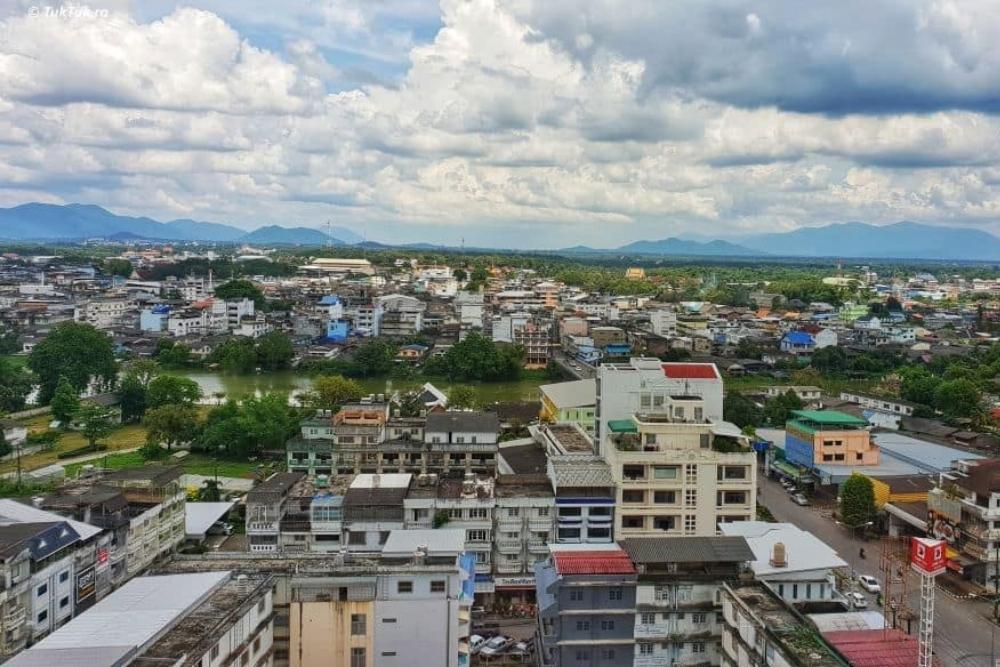
Essentially, Chanthaburi (which is home to some 30,000 souls) has an old city center worth visiting from one end to the other, passing through the midst of a multicultural community that draws its roots from the history that has defined its existence since the 19th century. That’s when Vietnamese Christians began to arrive, having escaped political and religious persecution in the Chinese Cochin region of southern Vietnam. The second wave of Vietnamese followed between 1920 and 1940, during the French colonialist period, and a third came after 1975 when the communists took over southern Vietnam. On top of all this, between 1893 and 1905, the French occupied Chanthaburi, following disputes on the border between Siam and Indochina. And the poor local population… adopted them all.
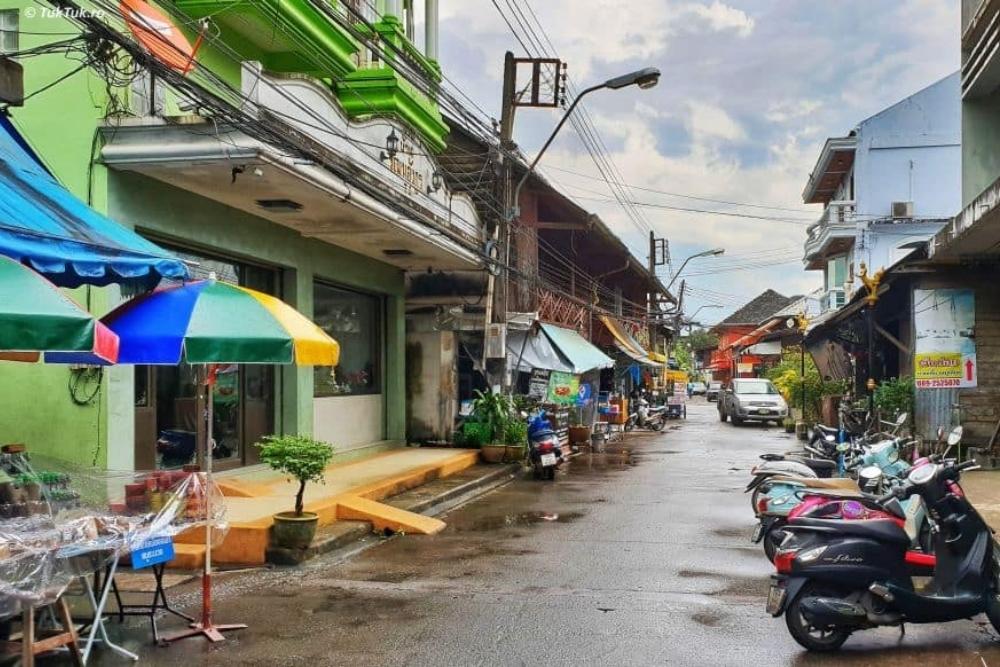
Economically, Chanthaburi was noted for something unique: the gem trade. Hundreds of Thai and African traders populate the town with stalls selling jewels of all kinds, forming a market that’s already internationally recognized (but one you wouldn’t want to venture into without a local guide). Want a ruby, an opal, even something more precious? Come to Chanthaburi. At the hotel where I spent two nights, the owners run a gemstone business. With a smile on their face (the national sport in Thailand), they took me to see how the employees chip away at the little “boulders” to make them flawless. And when you have a history in this field dating back to the 15th century, this craft flows through your blood. And then in your fingers. Chanthaburi gemstones are said to be not only beautiful but of exceptional quality. Since I’m not a scholar, I couldn’t deny it; I just admired them.
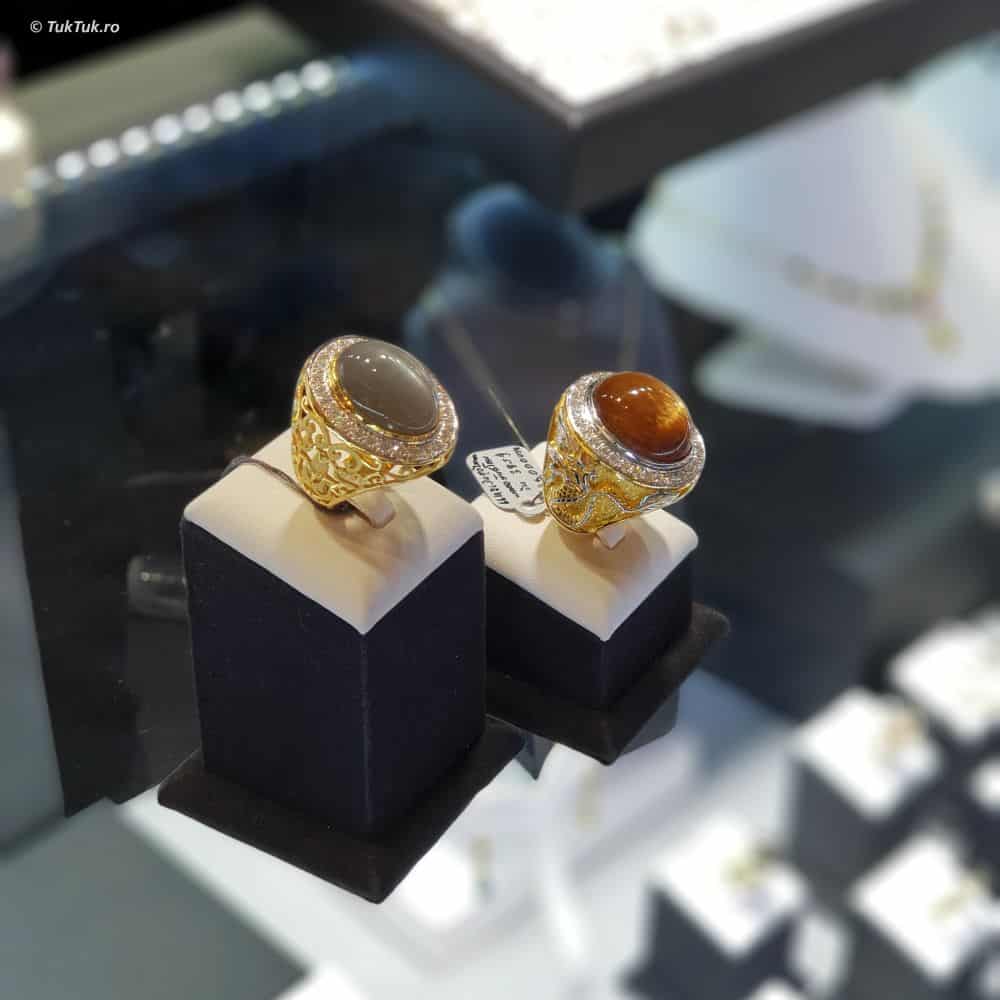
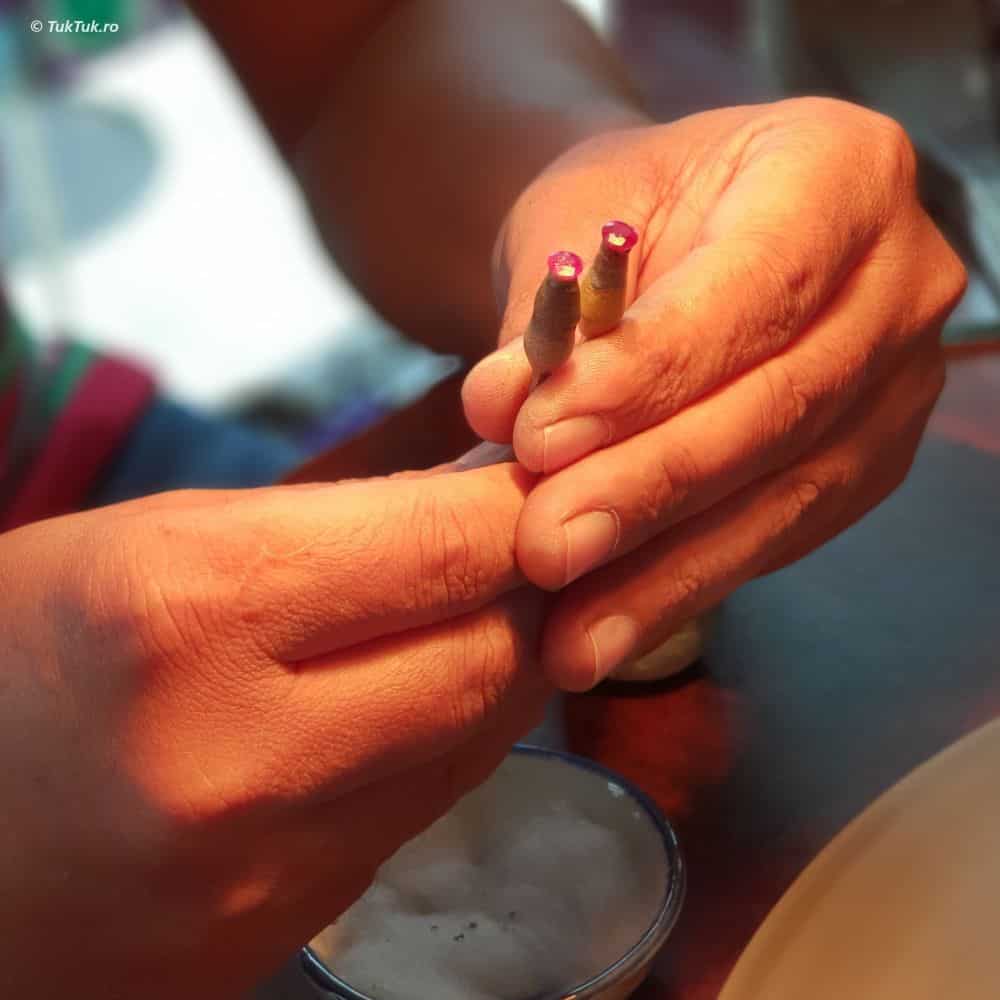
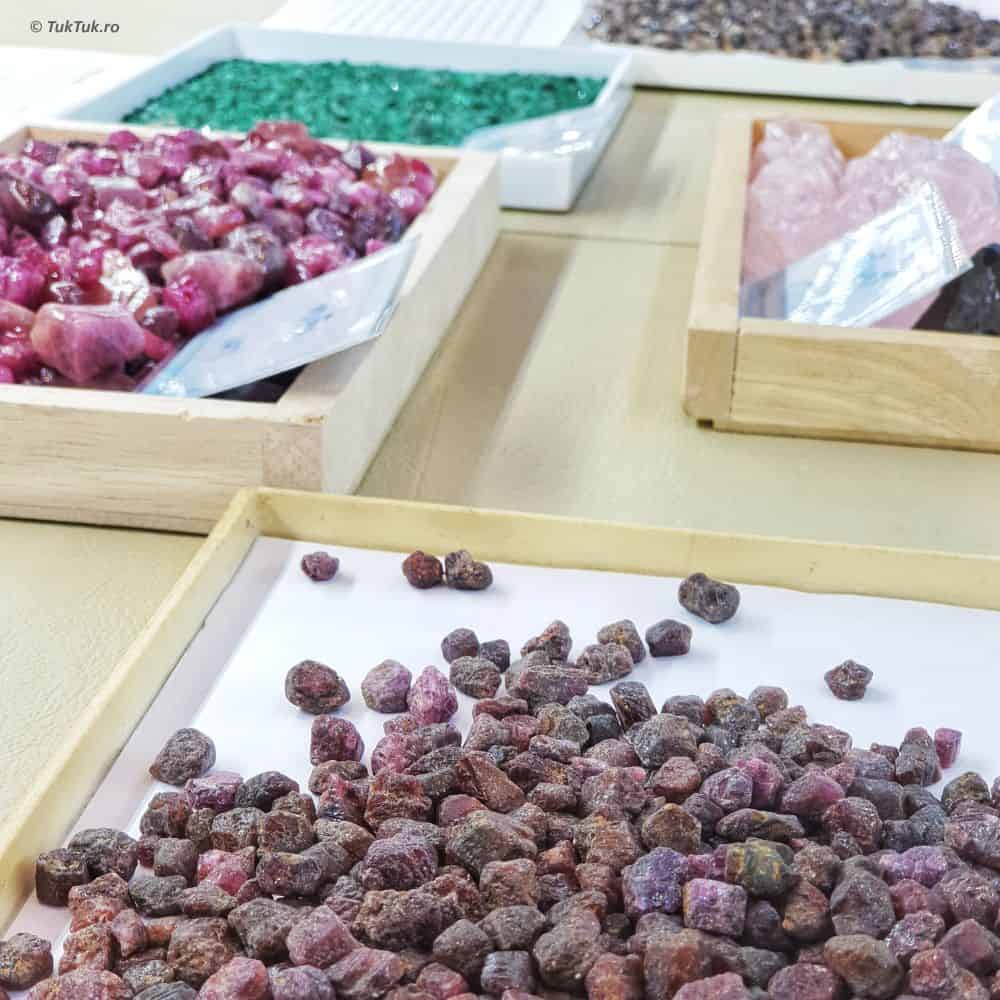
As I said, the main area that would interest the traveler arriving in Chanthaburi is Th Sukhaphiban – the waterfront community, Chantaboon. It is basically a kilometer street lined with old, wooden houses, well preserved enough to look like 60-70 years ago, with shops, traditional restaurants, and even small museums.
However, it’s a route that starts with a visit to the Cathedral of the Immaculate Conception, Thailand’s largest and perhaps most beautiful cathedral. It’s located near the Chanthaburi River, practically before entering the Chantaboon area. Amidst the many Buddhas, one bigger than the other, more reclining, golden, or emerald, you wouldn’t expect to come across such a beautiful cathedral in Thailand.
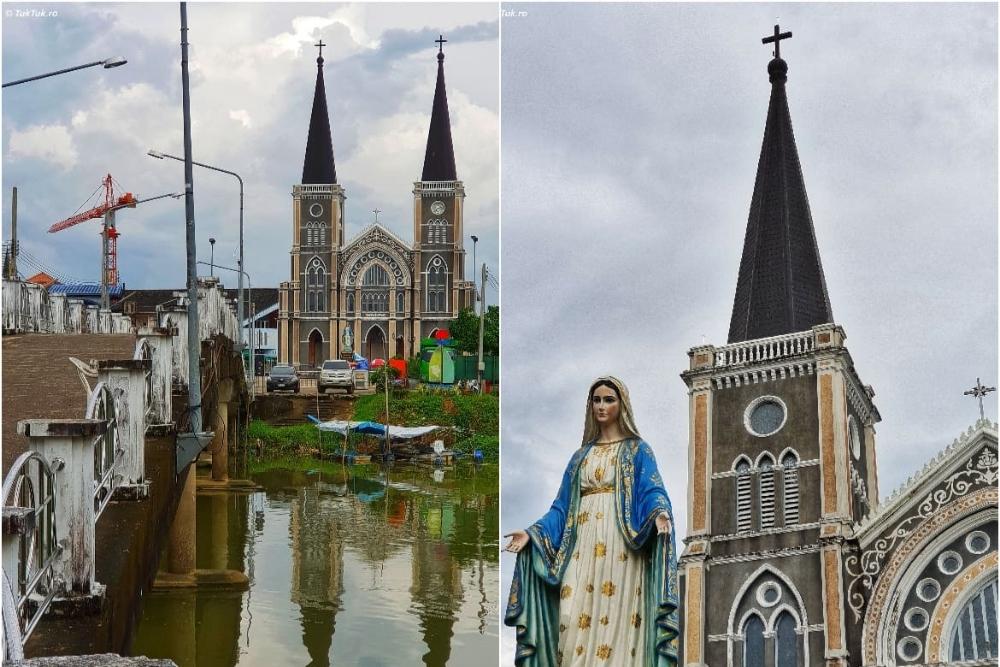
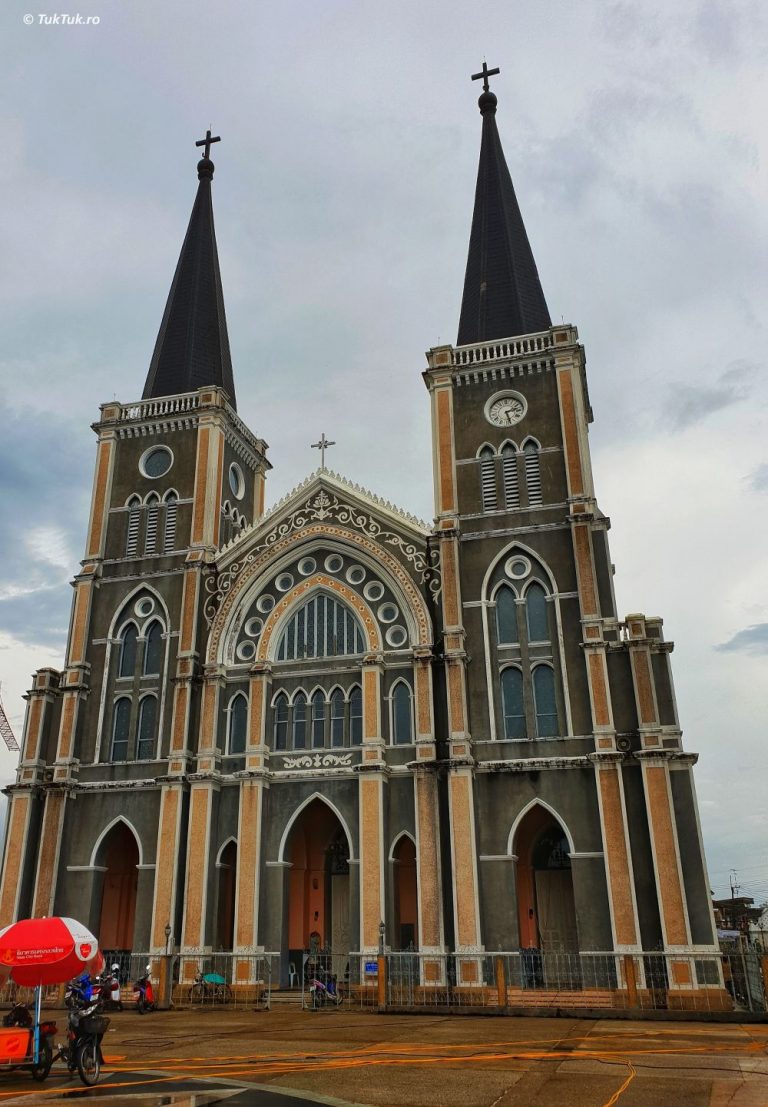
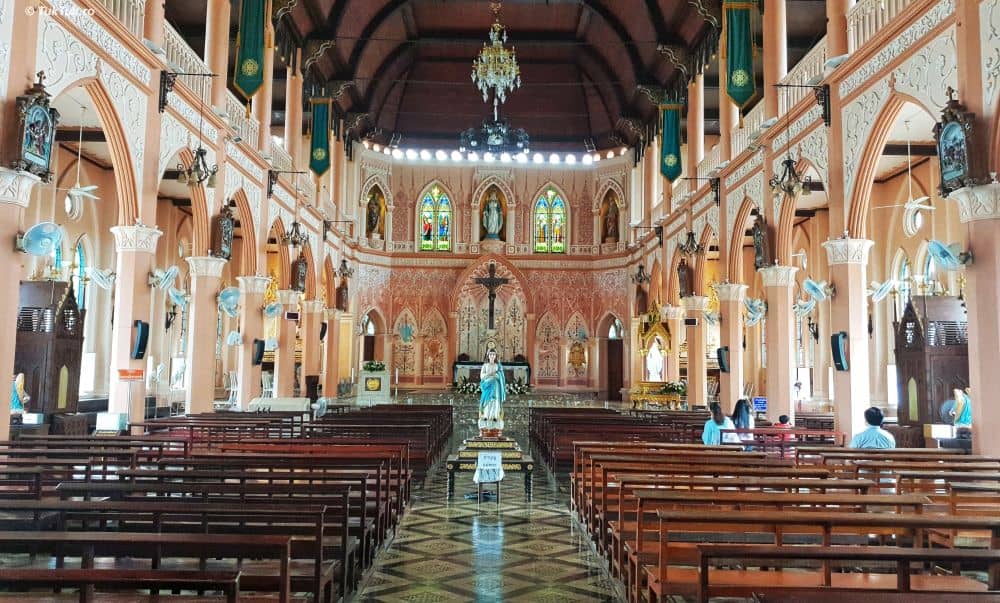
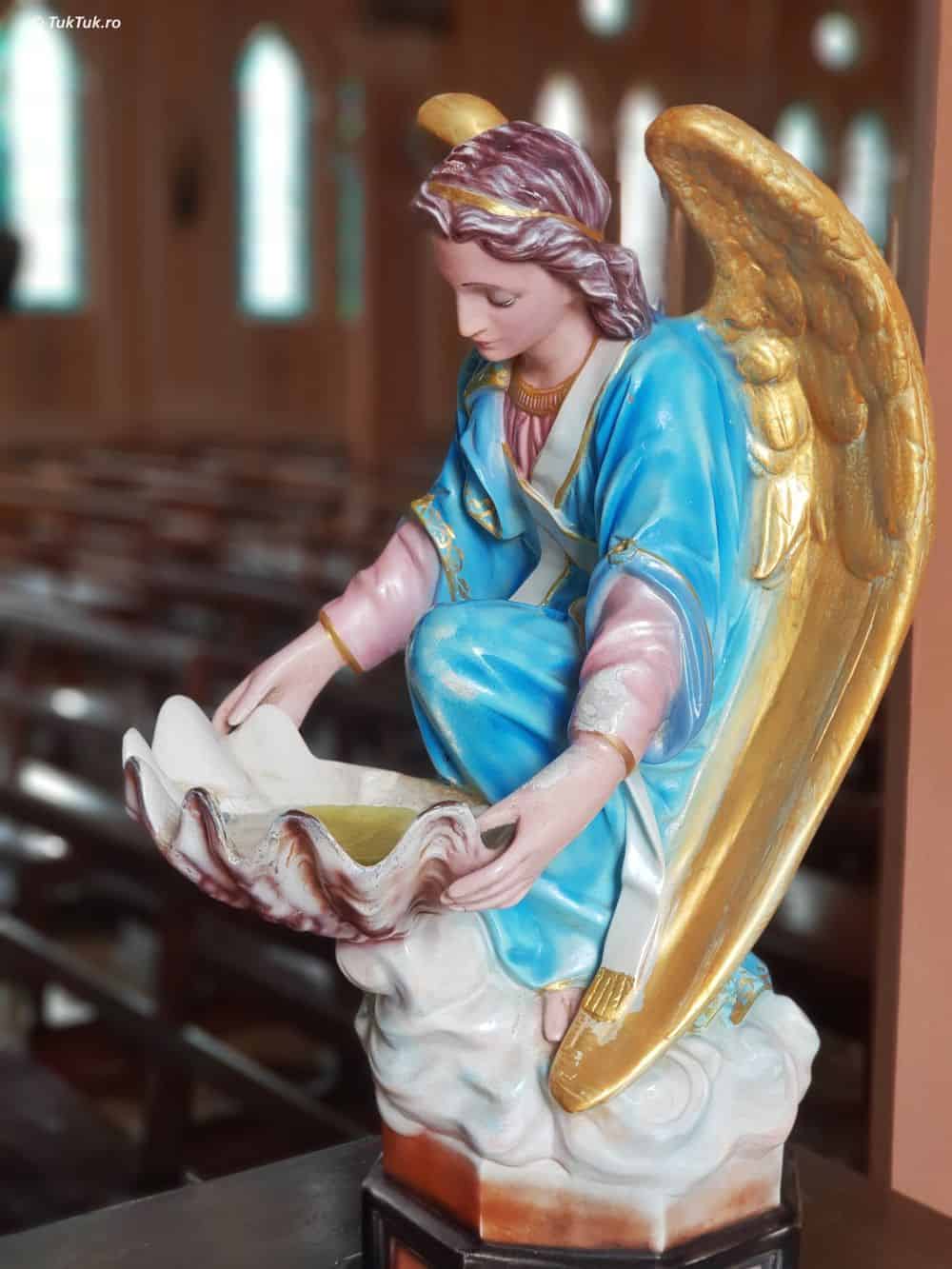
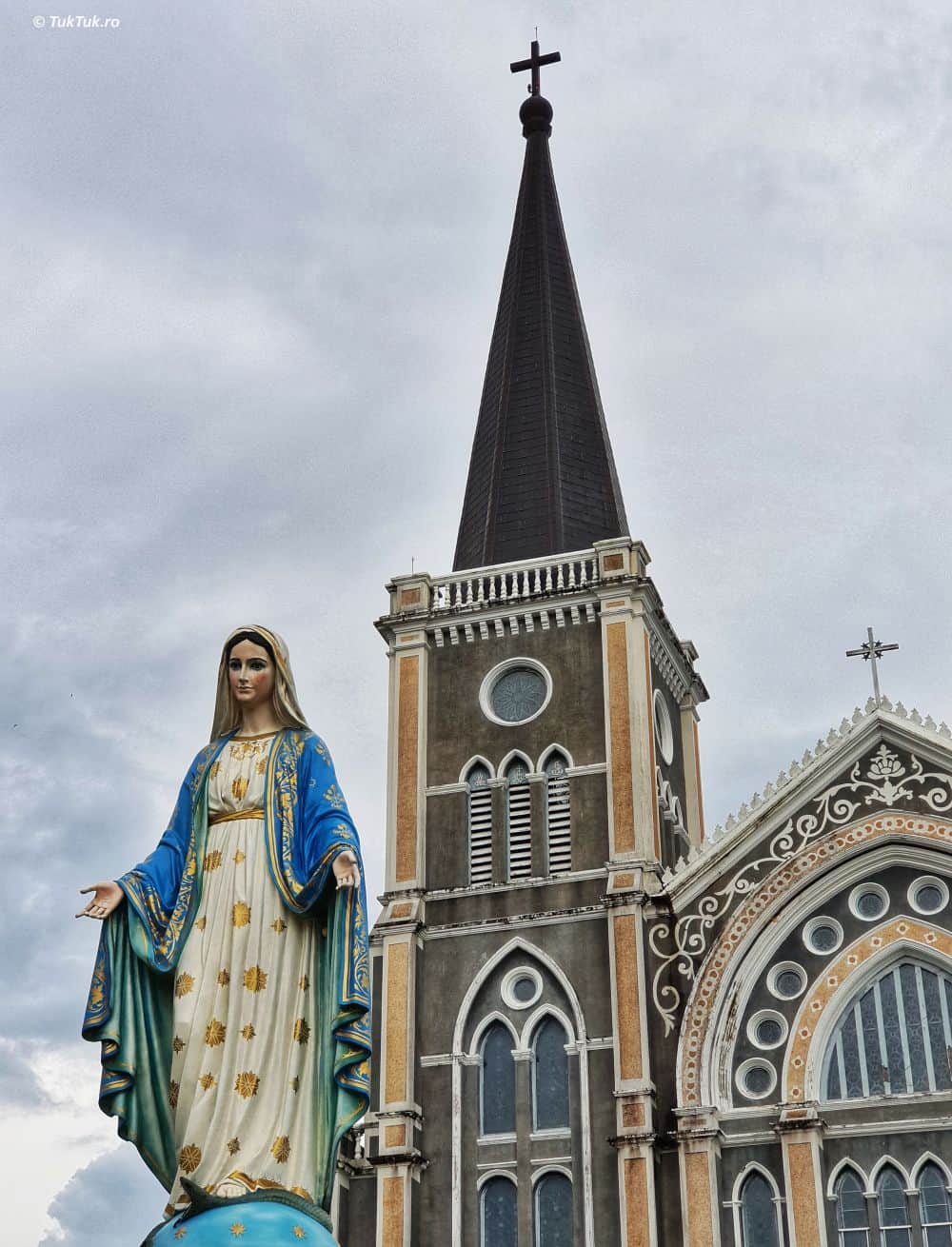
Built in Gothic style, in 1906, the cathedral is decorated with beautiful stained glass windows. It is home to some interesting statues, most notably the Virgin Mary, covered with semi-precious stones, which gracefully pierces the altar. It is undoubtedly the most striking sign left by the French during their ten years of occupation, who saw fit to erect it on the site where a small chapel had stood in 1711.
While I was in the cathedral, it rained. It would rain again later as I strolled through Chantaboon, marveling at the wares arranged out by bored shopkeepers, dodging mothers on scooters, or admiring women nonchalantly preparing Thai food on the street. I also got to see a temple, colorful and deserted.
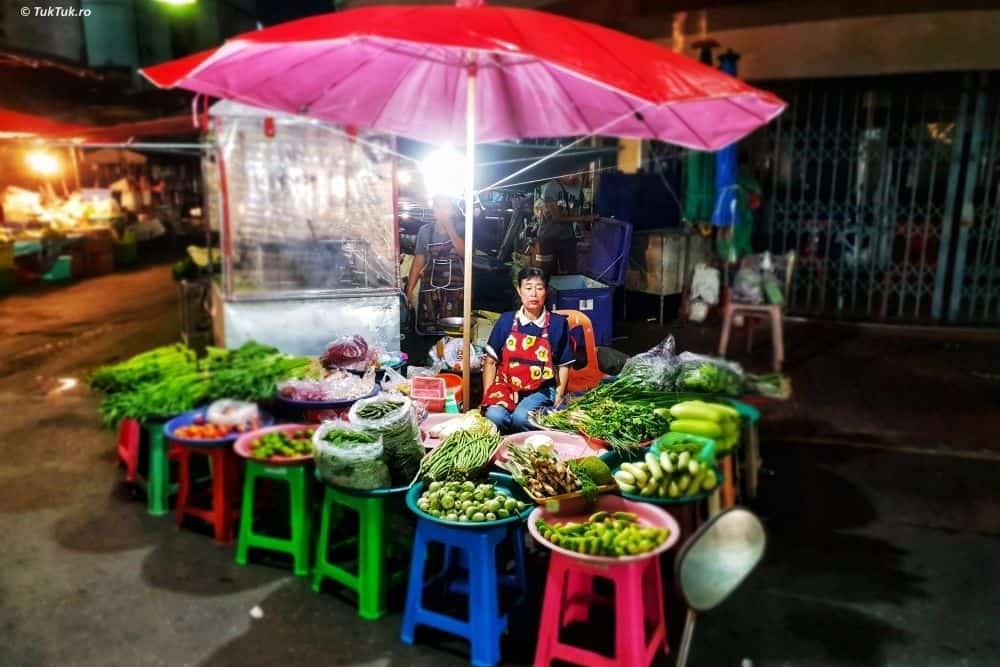
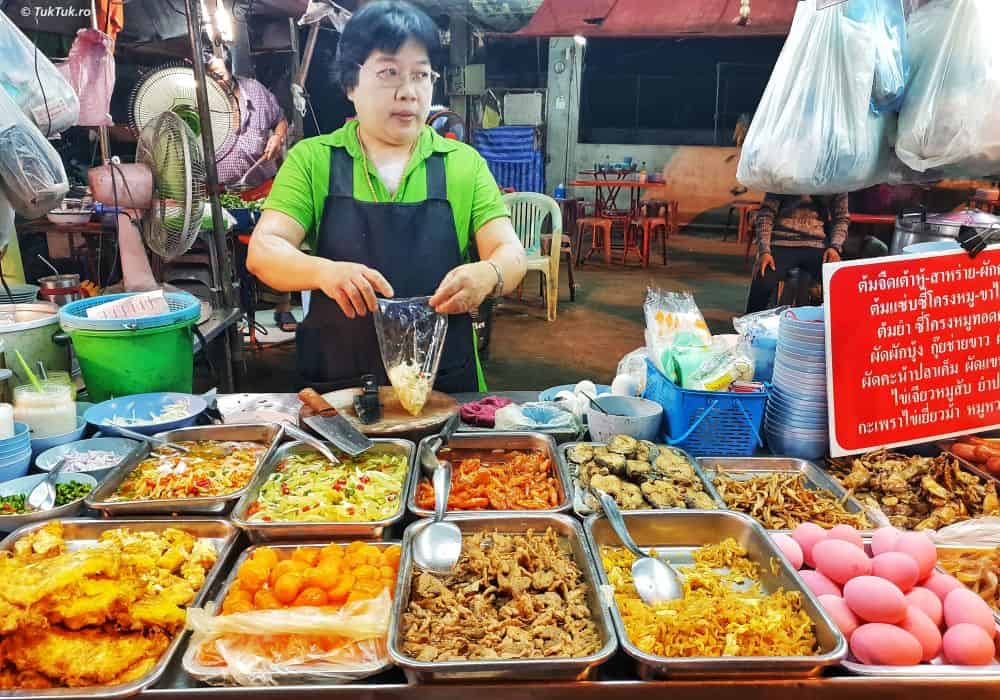
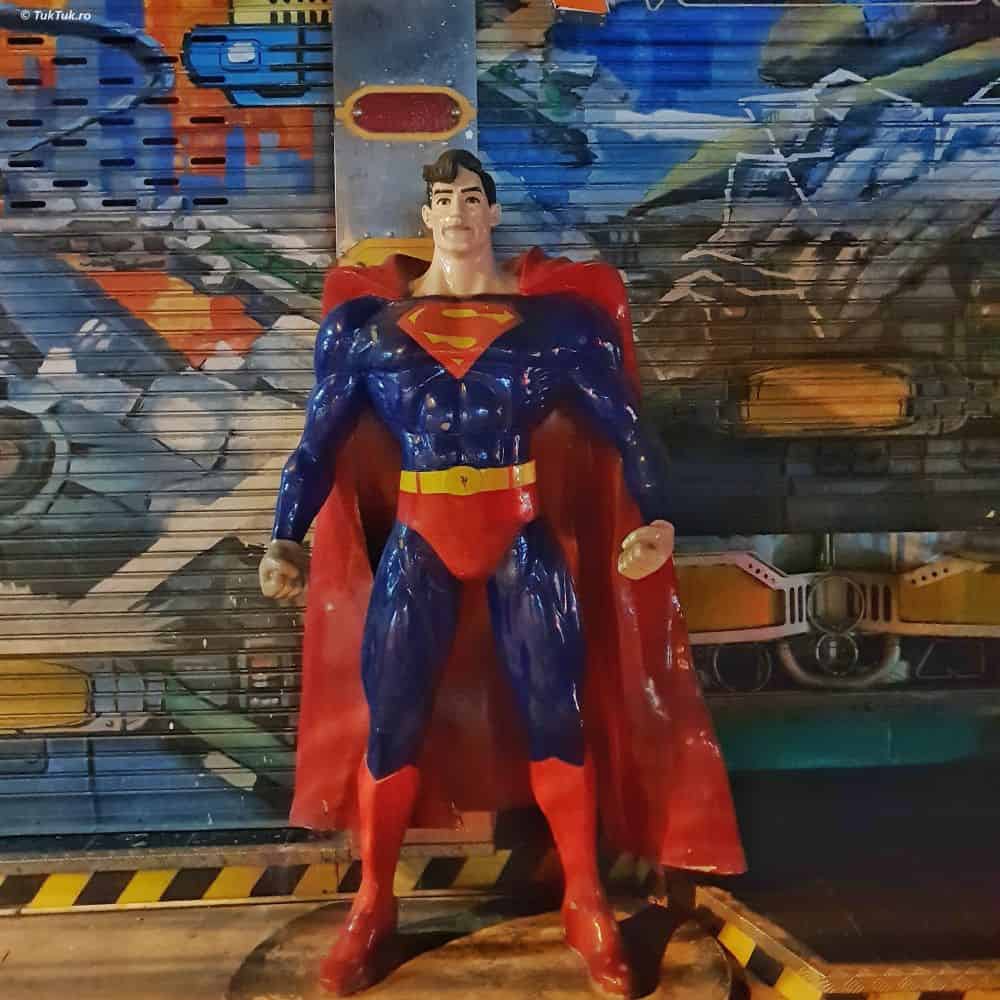
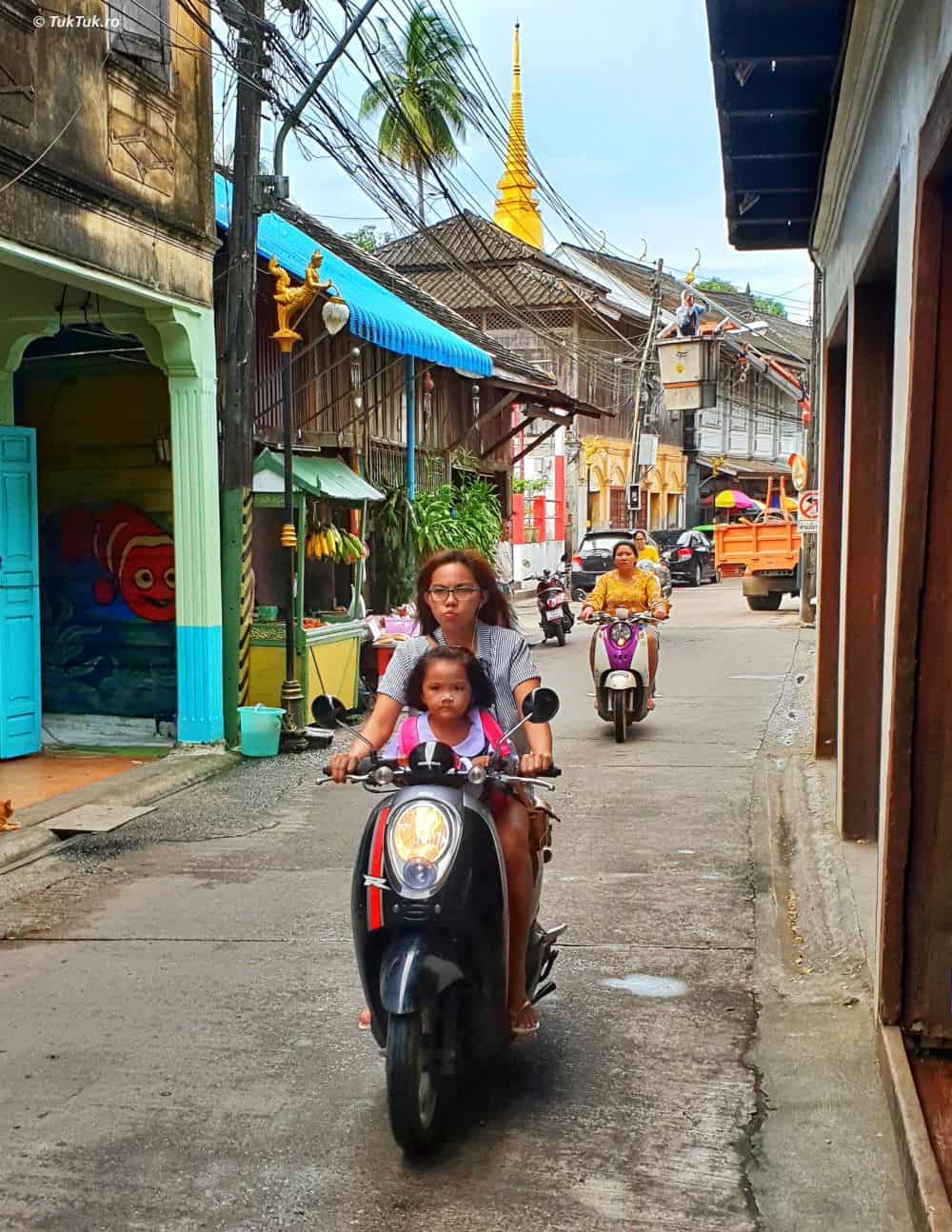
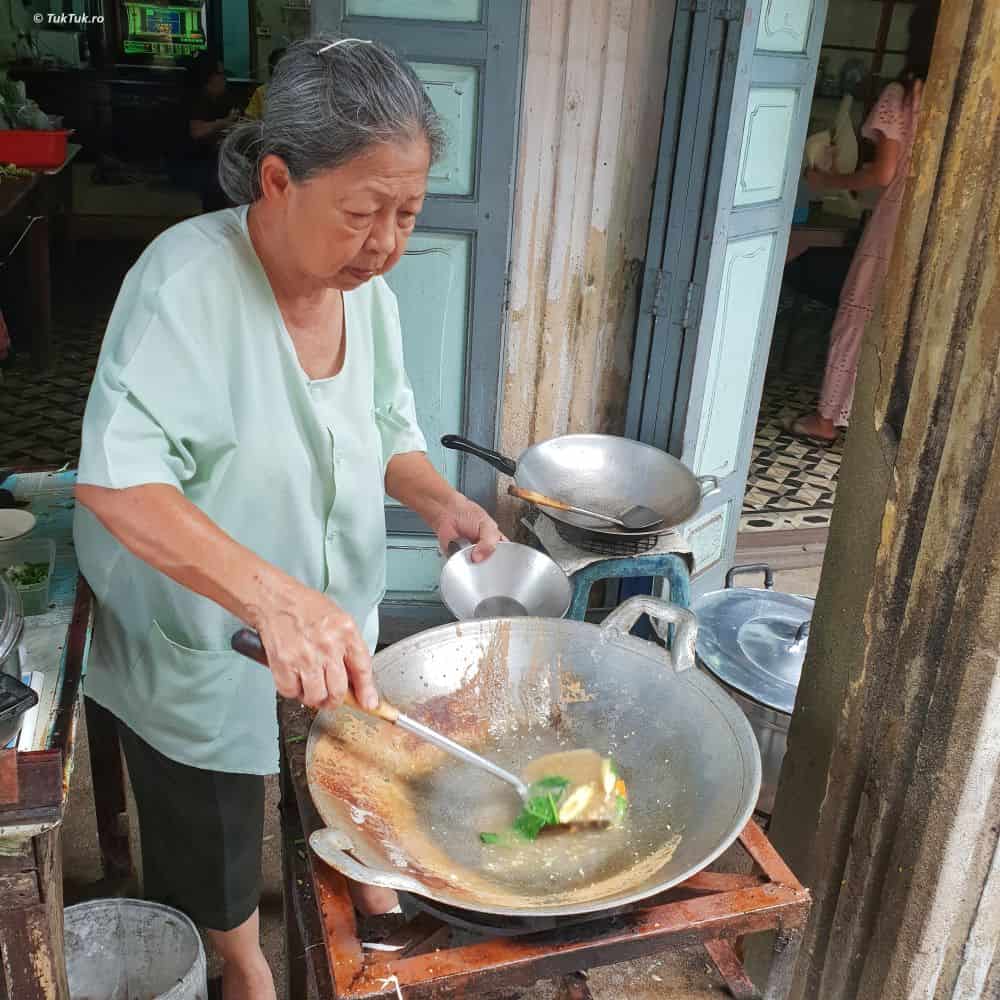
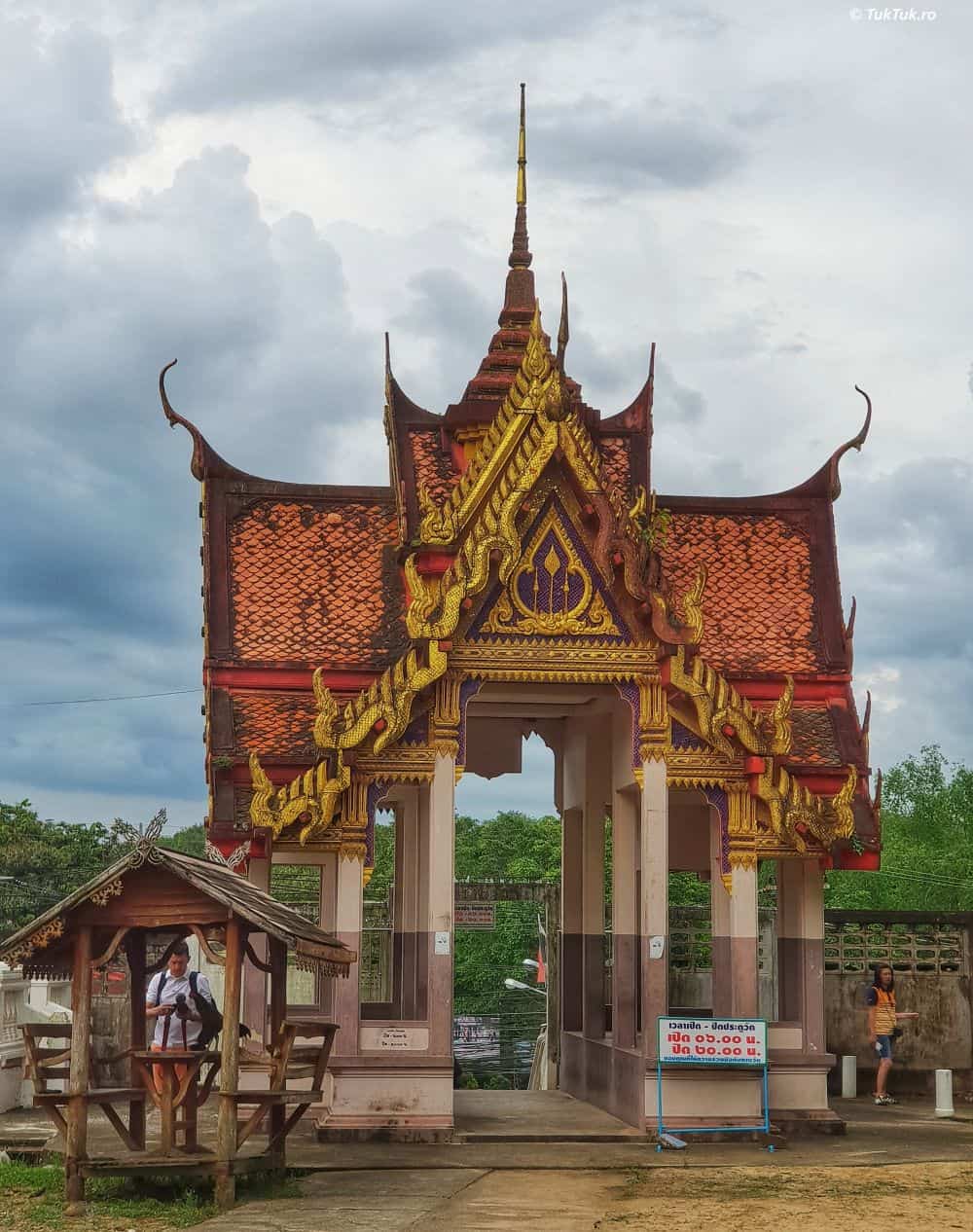
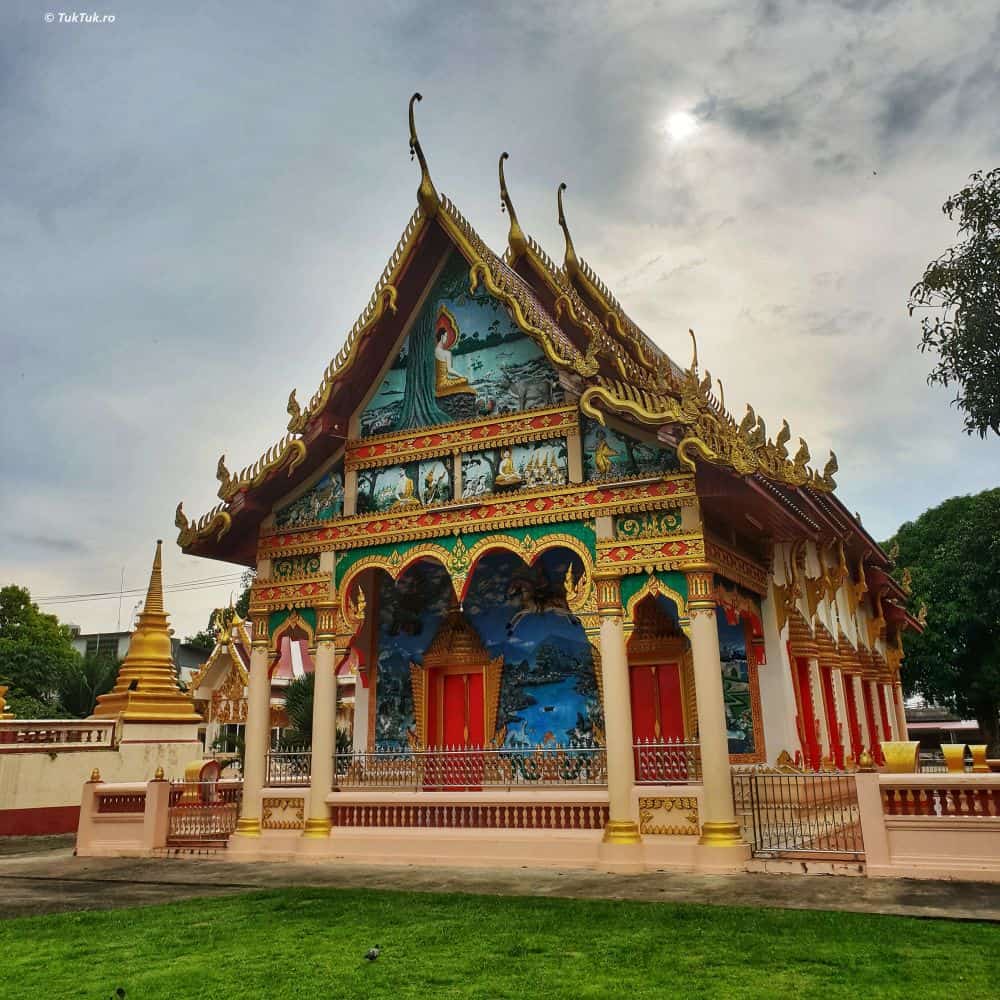
Later in the evening, after admiring a classic rain shower, I wandered through Chanthaburi’s night market, with street food and fruits and people coming in for a ready-made dinner, carrying small children on motorbike saddles, paying a few bahts for a bag of groceries and heading back to who knows what gem-filled dwellings.
Chanthaburi is not a city that pumps you with dreams of pretty faces. But before I fell asleep, I was left with the image of super-sized superheroes at the end of the street where the night market was lurking, and the next morning I boarded the small coach heading for the Cambodian border to begin a mini-adventure in a country with a history of its own.
You may also like: New Delhi – Qutub Minar, and the thrill of a city where honking is a national sport

